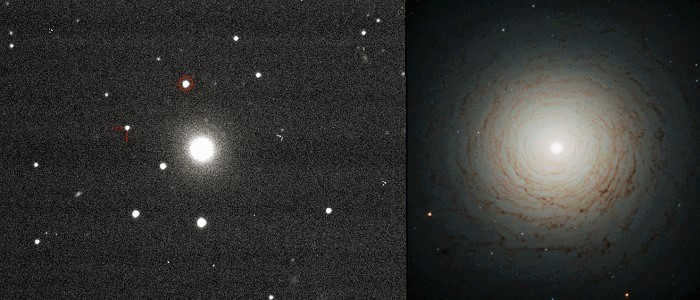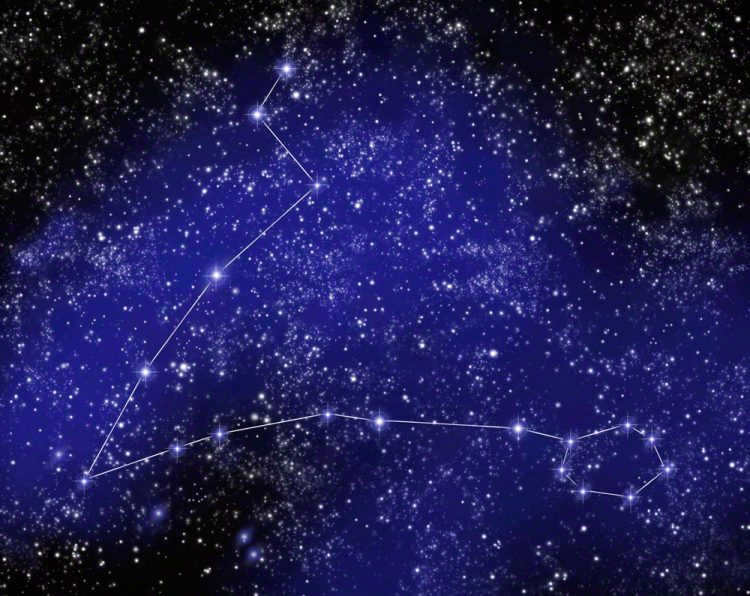
- Constellations
Pisces – A large constellation in the zodiac, located between Aquarius and Aries. It is commonly divided into the northern Pisces (under Andromeda) and the western Pisces (between Pegasus and Aquarius).
Many individuals are unfamiliar with the appearance of the Pisces constellation in the night sky due to its dim stars. It is relatively faint and can only be seen in certain seasons. By mentally connecting the most prominent stars, one can form an acute angle with a triangular apex. Along a horizontal straight line, the zodiacal sign appears as three faint points, although they are still visible to the naked eye.
| Pisces |
| Psc |
| Pisces |
| 22 h 45 m to 02 h 00 m |
| -7° to +33° |
| 889 sq. deg. (14th place) |
| none; brightest |
The primary celestial bodies in the astrological sign of Pisces
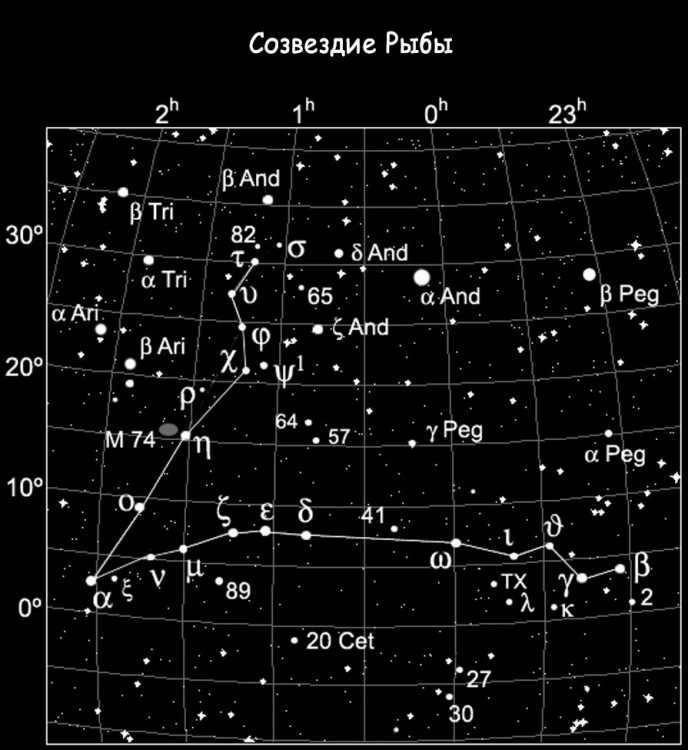
It is quite unexpected that the most luminous star in the constellation is absent. Undoubtedly, there are numerous brilliant stars, but they are not accounted for in the overall luminosity ranking. Despite the fact that Pisces comprises over 160 stars, only a handful can be singled out.
This Pisces
Regarded as the primary star in the specified region, this is a yellow giant belonging to the fourth magnitude classification. Interestingly, its luminosity is over 300 times greater than that of the sun. However, its distance of 294 light years from the Earth renders it an unremarkable point in the celestial sky for terrestrial observers. There is a faint companion that orbits at a separation of one arcsecond.
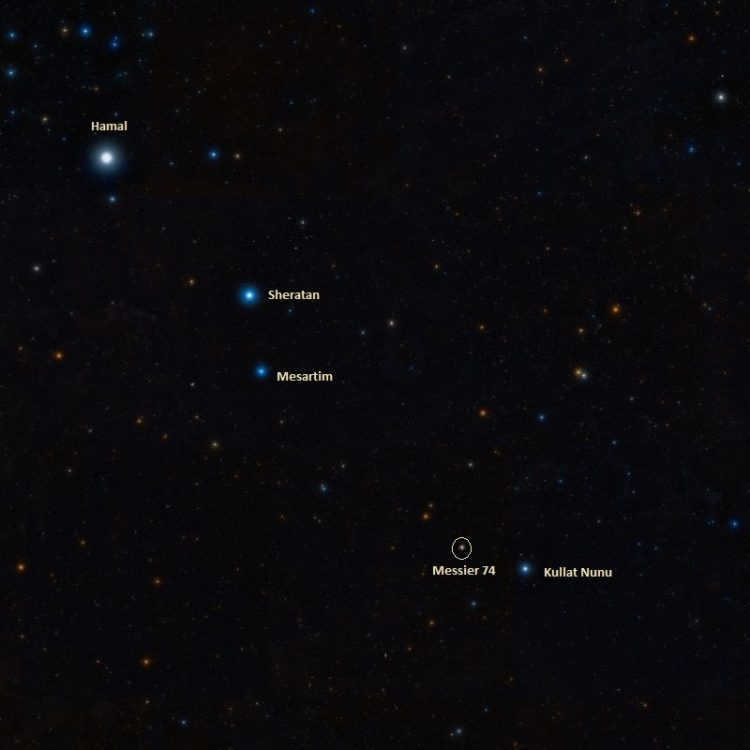
The star has a mass that is 3.5 to 4 times greater than our Sun and is 26 times larger in size. It is informally referred to as Kullat Nunu, which is derived from the Babylonian terms for “fish” and “cord” respectively, symbolizing the connection between fish.
Alrisha (Alpha Pisces)
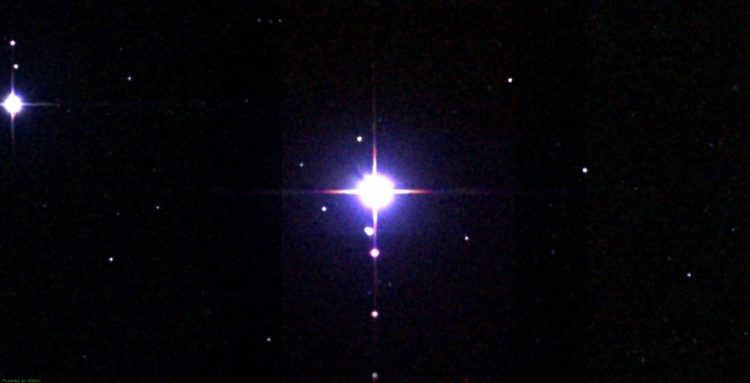
A nearby binary star system has a combined brightness of 3.82 and is located 139 light-years away. The two stars in the system are separated by an angle of 1.8 arc seconds. The primary star is classified as an A0p and has a visual magnitude of 4.33, while the companion star is classified as an A3m and has a visual magnitude of 5.23. The two stars orbit each other with a period of over 700 years.
The primary star has a mass 2.3 times that of the Sun and is 31 times brighter, while the companion star is 1.8 times more massive and 12 times brighter.
This binary star system is commonly referred to as al-rišā, which translates to “well rope” in Arabic. It is also sometimes called Okda, meaning “knot”.
Delta Pisces
Delta Pisces is a binary star system that has a visual magnitude of 4.43 and is located approximately 305 light years away from Earth. It is situated 2 degrees away from the ecliptic and is often obscured by the presence of the Moon.
The primary star in the system is an orange giant, classified as a K5 III, and it has a radius 43.1 times larger than our Sun and is 380 times brighter. The companion star, which has a magnitude of 13, is located 2 angular minutes away. It is either a dwarf star or a star that appears to be in the same line of sight.
Omega of Pisces
This celestial object is a subgiant star of a yellow-white color (F4IV) with a visual magnitude of 4.036 and located at a distance of 106 light years from Earth. It holds the distinction of being the nearest star to the east of the Pisces Ring. Scientists speculate that it may be a binary star system. In the event that it is a solitary star, its mass would be approximately 1.8 times that of our Sun and its luminosity would be 20 times greater.
Iota Pisces
An F7 V yellow-white dwarf star, Iota Pisces has an apparent visual magnitude of 4.13 and is located at a distance of 44.73 light-years. It is bigger and more luminous than our Sun. Additionally, this star is believed to be a variable star and has two companions that are visible along the line of sight.
Gamma Pisces
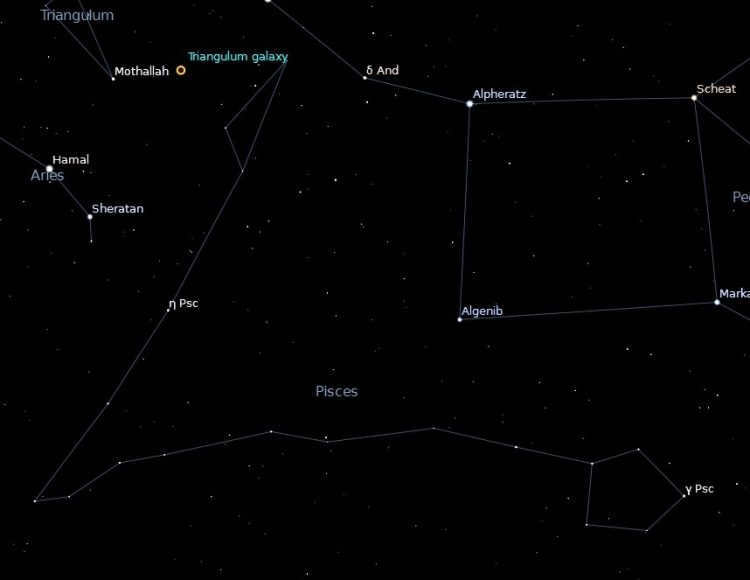
This star is a giant yellow star known as a G9 III. It has a visual magnitude of 3.699, making it the second brightest star, and it is located 138 light-years away. It is much larger and brighter than our Sun, being 10 times larger and 61 times brighter. The star is approximately 5.5 billion years old and is part of the Pisces Ring asterism. It will remain distant from the Sun for a significant period of time, moving at a rate of ¾ of an arc second per year.
The star is a yellow giant (G8 III) with an apparent magnitude of 4.26 and a distance of – 142 light years. It was documented in the 1515 Almagest as Torcularis septentrionalis.
Pisces’ Epsilon
An orange giant (K0 III) with an apparent visual magnitude of 4.28 (slightly larger and brighter than the Sun) and a distance of 182 light-years. It is an intriguing eclipsing binary star, consisting of two objects of equal magnitude, separated by 0.25 arc seconds.
Theta Pisces
The star is a K1 III orange giant with a visual magnitude of 4.27 and a distance of 159 light-years. It is brighter than the Sun, but cooler.
Nu Pisces
Nu Pisces is an orange giant (K3IIIb) with an apparent magnitude of 4.448 and a distance of 370 light-years. It is also known as 51 Kita. While it is cooler than the Sun, it has 1.9 times its mass and 34 times its radius.
Beta Pisces
This star, known as Beta Pisces, has a visual magnitude of 4.53 and is characterized by its blue-white color. Its traditional name is “Fum al Samakah”, derived from Arabic, meaning “mouth of the fish”. Interestingly, Beta Pisces holds the distinction of being the most distant star from Earth, located approximately 492 light-years away.
Van Maanen’s star
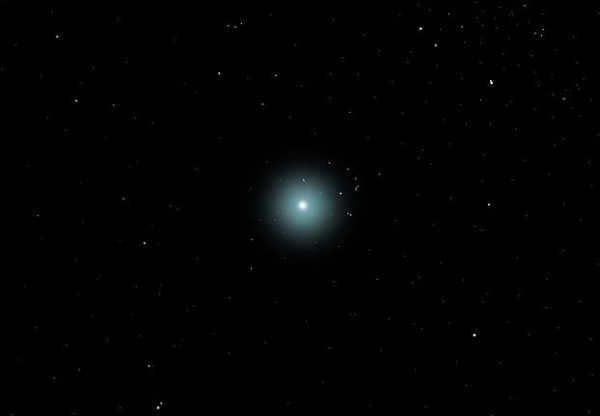
A white dwarf known as DZ8 has a visual magnitude of 12.374 and is located 14.1 light-years away. It is considered to be the third closest dwarf to the Sun, following Sirius B and Procyon B. Additionally, it holds the distinction of being the nearest single white dwarf. The spectrum of this dwarf star contains metals, which are elements heavier than helium.
Van Maanen’s star, as it is commonly known, has a mass that is 70% that of the Sun and a size comparable to that of Earth. Despite its relatively small mass and size, it emits significantly less light than the Sun, with a brightness 5,750 times lower.
This star is located 2 degrees south of Delta Pisces and possesses 63% of the Sun’s mass and only 1% of its radius. It is estimated to be around 3 billion years old. Van Maanen’s star was discovered in 1917 by the Dutch-American astronomer Adrian van Maanen.
A crimson celestial body (C5III) exhibiting a magnitude fluctuation of 4.9-5.5 and situated at a distance of 760 light-years. One of the most renowned crimson stars, it is categorized as a variable carbon star, belonging to the late stellar type. Its characteristics resemble those of a crimson giant (occasionally a crimson dwarf), possessing an atmosphere in which carbon prevails over oxygen.
54 Pisces
An apricot-colored dwarf (K0 V) boasting an apparent visual magnitude of 5.88 and positioned 36.1 light-years away. In 2002, a planet was detected in its vicinity, followed by the discovery of a brown dwarf in 2006.
This celestial body encompasses 76% of the mass of the sun, 94.4% of its radius, and 46% of its luminosity. Its age amounts to 6.4 billion years. The brown dwarf (T7.5B) possesses a mass 50 times greater than that of Jupiter (0.051 solar mass). It is noteworthy that this was the first brown dwarf identified in the vicinity of a star that also harbored an exoplanet in its orbit.
The planet has a similar mass to Saturn and it revolves around the star at a distance of 0.28 a.u. (equivalent to Mercury’s orbit). It takes 52 days for the planet to complete its orbital path.
6 G. Pisces (HD 217107)
This star is a yellow subgiant (G8 IV) with a visual magnitude of 6.17 and it is located 64.8 light-years away. It has a mass that is 98% of the Sun’s mass and its radius is 1.31 times larger. The star is estimated to be 7.7 billion years old. Within its orbit, two planets have been discovered with orbital periods of 7.1 days and 8 years.
Asterisms
An asterism is a group of stars that form a recognizable pattern in the sky. They are smaller than constellations and are often made up of stars from different constellations. Asterisms are popular among stargazers because they are easier to identify and locate than larger constellations. Some well-known asterisms include the Big Dipper, the Summer Triangle, and Orion’s Belt. Astronomers use asterisms as reference points to navigate the night sky and locate other celestial objects.
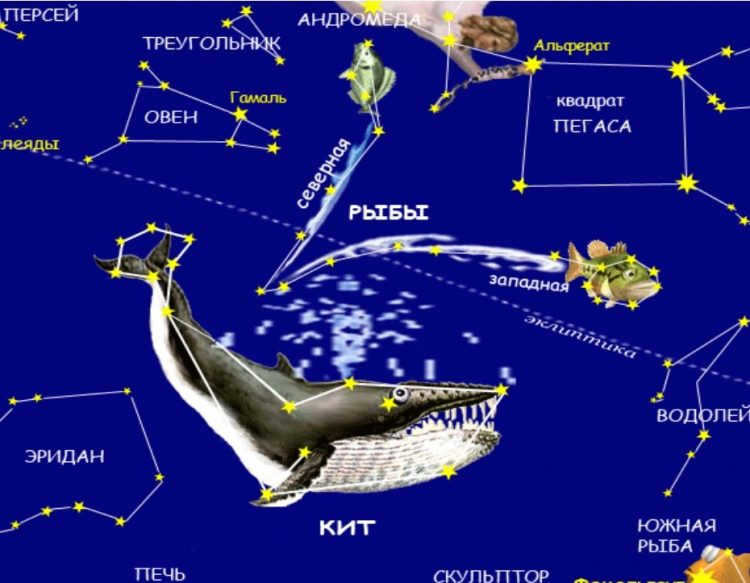
When observing the constellation, there are two distinct groups of stars that can be easily identified in the sky: the North Fish, which consists of three stars (τ, υ, and φ), and the West Fish, which consists of seven stars (γ, κ, λ, 19, ι, θ, and 7). The last group of stars in the Arabic tradition is also known as the Venus. Visually, the constellation appears like an acute angle, with a unique triangular “pendulum” shape formed by three faint stars along a horizontal line when connecting the brightest stars.
Fascinating things to observe
1. M 74 Spiral galaxy (NGC 628)
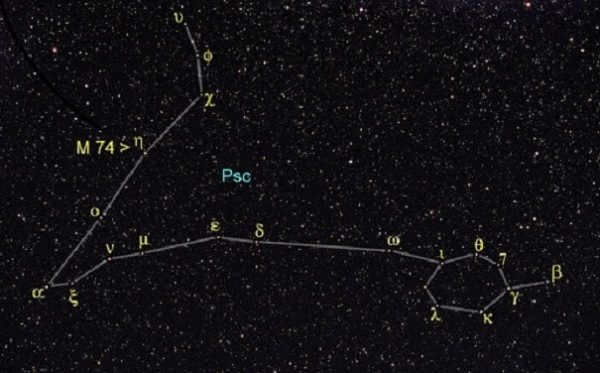
During his era, the astronomer Charles Messier made a significant discovery of a spiral galaxy known as M 74 or NGC 628. Experts were able to determine that the galaxy is located approximately 35 – 40 million light years away from the solar system. With its apparent size measuring 10.5′ × 9.5′, the galaxy has a brightness rating of 9.1m.
This galaxy bears a striking resemblance to our own in terms of its structure and size, and it is also notable for its active star formation. Scientists have observed the formation of two supernovae stars within the past decade alone. Furthermore, recent research has revealed the presence of a black hole emitting the most powerful X-ray radiation. M 74 is considered to be the primary galaxy within a small local group.
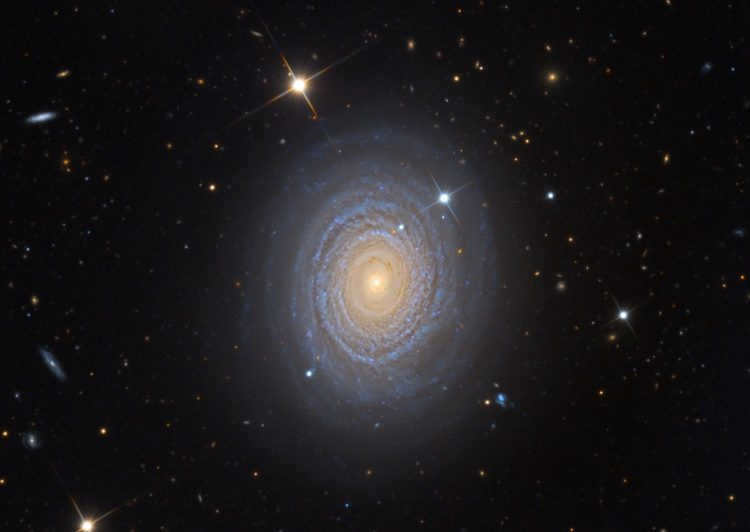
A small (measuring approximately 5.4′ × 3.9′) and faint (with a brightness of 10.4m) spiral galaxy known as NGC 488 possesses an exceptionally dense and luminous core. When observed through a 20-centimeter telescope, the spiral galaxy is not discernible, appearing only as a dim and blurry spot.
Interestingly, despite numerous attempts, no space-based telescopes have successfully captured detailed images of this galaxy.
To begin your search, start from the prominent 4th magnitude star Al Risha (α Psc) and proceed clockwise, passing by the other bright stars until reaching μ Psc. Then, slightly lower the telescope tube. It is possible to locate the μ Psc star directly using the optical finder.
3. NGC 524: A Fascinating Spiral Galaxy
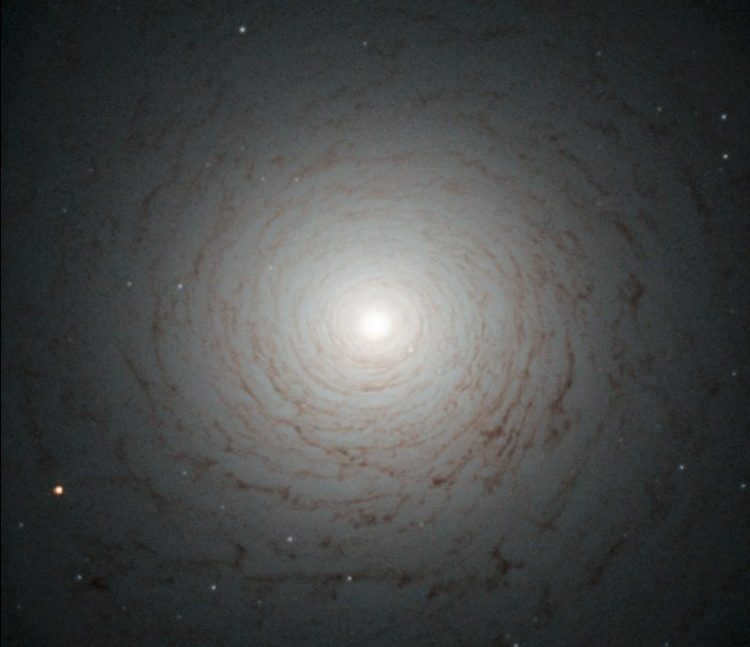
There is another dim and unimpressive spiral galaxy called NGC 524. It belongs to the S0 type. Its arms are not prominent and only a slightly bright nucleus can be seen. At first glance, it may resemble an elliptical galaxy. By the way, do you recall the name for spiral galaxies like S0? That’s right, they are called lenticular.
NGC 524 has a magnitude of 10.4m and angular dimensions of 2.8′ × 2.8′.
A few years back, NASA managed to compile a high-resolution, detailed image of NGC 524 by combining several thousand images.
4. NGC 660: A Spiral Ring Galaxy
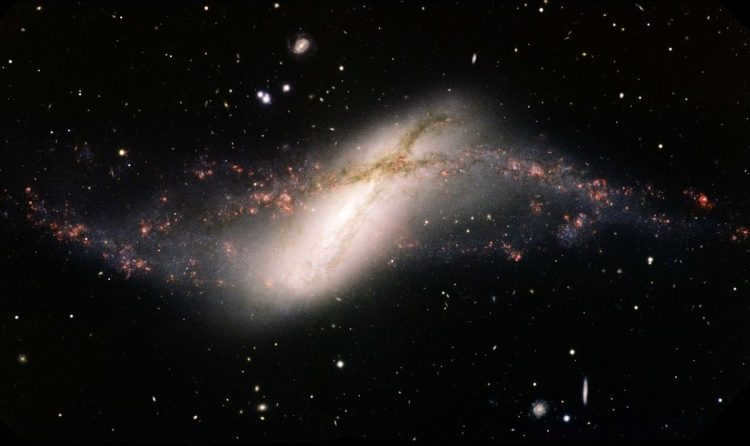
NGC 660 is a spiral galaxy that possesses a junction and a polar ring. The orientation of the ring is more inclined towards the plane of the galaxy compared to other polar ring galaxies. It has a diameter of approximately 40 thousand light-years (12 kpc).
This galaxy is located more than 20 million sv years away from our position, which is equivalent to 6 Mpc.
There are only a few dozen similar galaxies that can be observed using amateur and semi-professional telescopes. Therefore, we should take advantage of the unique opportunity in October and direct our telescope towards the constellation Pisces to locate NGC 660. Despite its relatively faint stellar magnitude of 10.7m, it has an apparent size of 8.3′ × 3.2′.
5. A cluster of galaxies located in the Pisces constellation
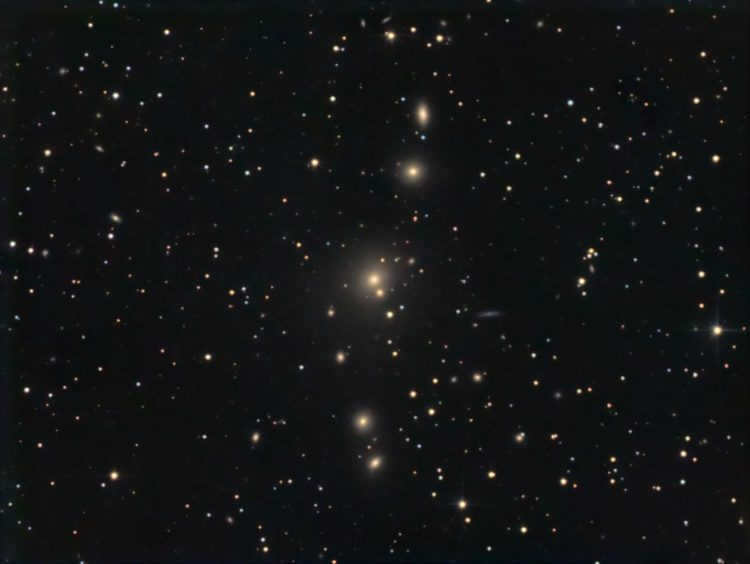
In the northernmost region of the Pisces constellation, situated close to the border with the Andromeda constellation, lies a cluster of eight galaxies. The most luminous member of this group is NGC 383, which has a brightness of 11.9m and an apparent size of 2.0′ × 1.7′. It is classified as a lenticular galaxy.
Above NGC 383, when observed through 20-25 centimeter telescopes, one can spot galaxies NGC 379 and NGC 380. To the south of NGC 383, there are NGC 386, NGC 375, NGC 384, NGC 385, and NGC 388. Unfortunately, it is difficult to distinguish each of these galaxies even with a 25-centimeter telescope, unless you are located in the mountains several hundred kilometers away from the nearest settlement.
Locating a constellation in the celestial sphere
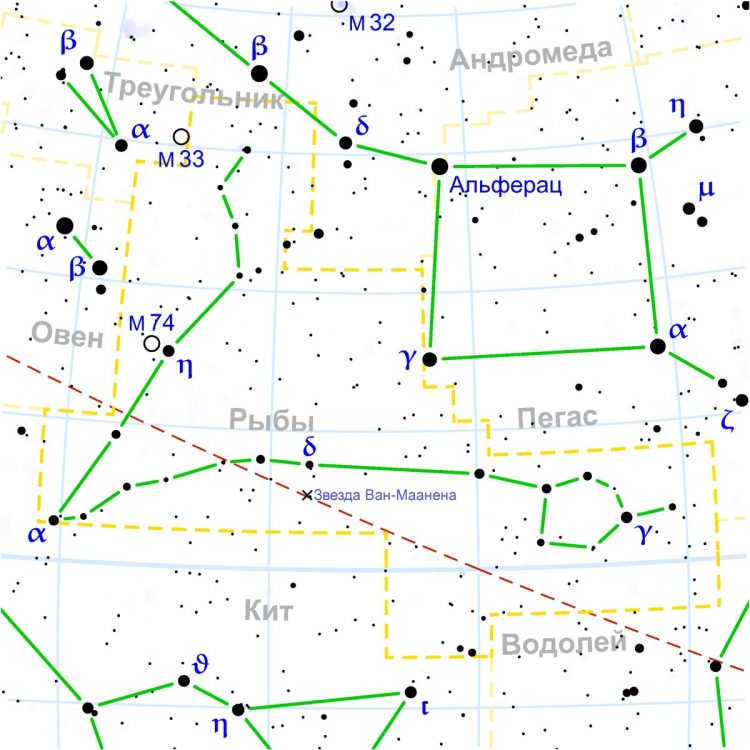
Spotting the constellation Pisces in the sky can be challenging, especially on days with cloudy weather. It becomes more visible during periods of clear skies, but its faintness causes it to be overshadowed by other zodiac signs. In Russia, it is most commonly seen in September and October, when the stars are closer. On March 11, the Sun passes through Pisces, making it practically invisible in the sky during those moments.
Helpers in locating Pisces can be the neighboring celestial bodies. The constellation is situated near Andromeda and Pegasus, creating a distinctive square from which a chain of stars extends to the northeast. Some people perceive this formation as a hand covering Pisces. Another reference point could be Perseus, which is easily visible from all continents. His right foot points towards Aries, just behind which lies Pisces.
Origins of the Pisces constellation
Ancient Phoenician legends make mention of these stars, while Babylonian cuneiform cylinders contain information about the constellation of Pisces in a slightly altered form. The Greeks, in their enlightened state, passed down the present form and description of Pisces to us. Pisces was officially recognized as an independent constellation and mentioned in the second century by Claudius Ptolemy in his renowned star catalog, “Almagesta.”
These stars shine particularly brightly in the sky during periods of rain and floods, when the earth’s surface is saturated with moisture. It is during this time, when water is abundant, that the inhabitants of the water find the most favorable conditions. It is possible that the people of that time associated these bright stars with Pisces.
Pisces in mythology
The astrological sign of Pisces has a rich history in mythology. In Greek mythology, Pisces is associated with the story of Aphrodite and Eros. According to the legend, when the two were being chased by the monster Typhon, they transformed into fish and jumped into the Euphrates River to escape. In another myth, Pisces is connected to the story of the goddess Atargatis, who transformed into a fish to escape from a hunter. This symbolizes the idea of transformation and escape from danger. In ancient Babylonian mythology, Pisces is associated with the goddess Ishtar, who was often depicted with fish. In Hindu mythology, Pisces is associated with the Matsya avatar, the first incarnation of Lord Vishnu, who appeared as a fish to save mankind from a great flood. These myths and legends show the significance of Pisces in various cultures and highlight its connection to water and transformation.
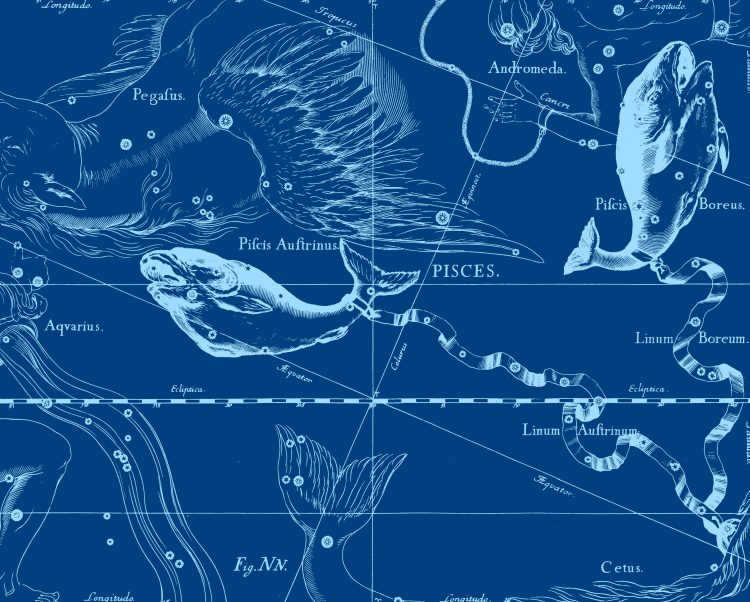
Aphrodite and her son Eros, also known as Venus and Cupid in the Roman interpretation, strolled alongside the edge of a vast river, which could have been the Euphrates or maybe even the Nile. While Aphrodite delighted in the beauty of the flowers, Eros honed his skills in archery. Unbeknownst to them, the immortal but aging demigod Tithon, who was infatuated with Aphrodite, observed their every move. Unexpectedly, Eros unintentionally struck the hidden old man with an arrow. This caused him to become consumed with an overwhelming love for Aphrodite, prompting him to chase after her and her son. Desperate for assistance, they sprinted along the riverbank, crying out for help….
And, lo and behold, a miraculous event occurred—two immense fish materialized and whisked Aphrodite and Eros to the opposite side of the river. In a gesture of gratitude, Aphrodite bestowed her sash upon the Fishes. Zeus, upon learning of this extraordinary tale, immortalized the responsive fish in the heavens above.
However, there exists another tale: Galatea and Akid lived in blissful harmony, yet their peaceful existence was marred by the intense infatuation of the Cyclops Polyphemus. After catching a glimpse of the exquisite Galatea by the seashore, the monstrous creature incessantly sought her company. It comes as no surprise that Polyphemus discovered Akid with Galatea, and in a fit of rage, he pursued them with the intent to end their lives. Desperate to escape their pursuer, the unfortunate men threw themselves into the sea, where they tragically met their demise. The grieving gods, in their compassion, transformed them into two fish and raised them to the heavens.
Astrology
Pisces is the twelfth astrological sign in the zodiac. It corresponds to the sector of the ecliptic from 330° to 360° and is known as a mutable sign in the Water trigon. The ruling planet of Pisces is Neptune. According to Western astrology, the Sun is said to be in the sign of Pisces from approximately February 20 to March 20.
It is important not to confuse the sign of Pisces with the constellation of Pisces, which is where the Sun is located from March 12 to April 18.
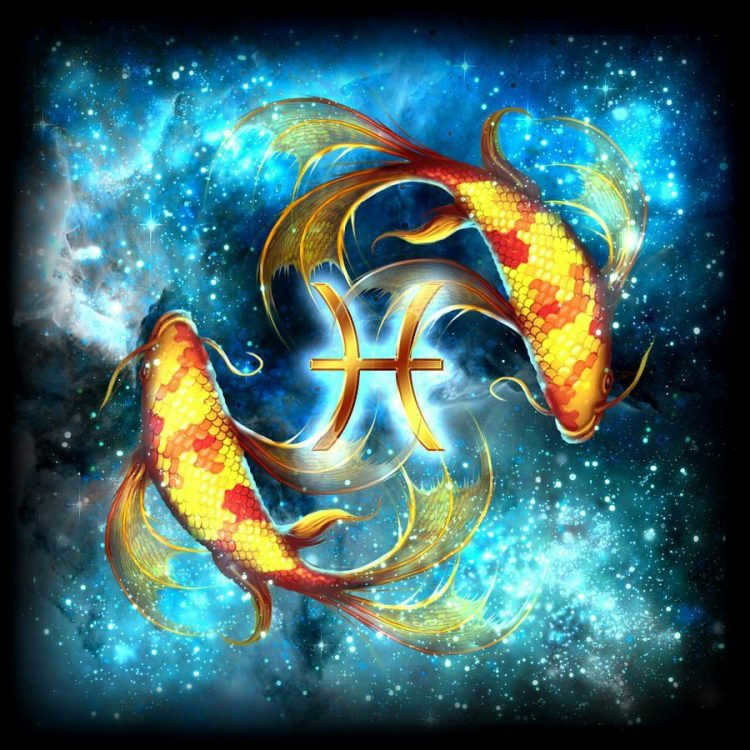
Interesting Facts about the Pisces Constellation
- Surprisingly, the brightest star in the Pisces constellation is almost invisible from Earth, yet it still manages to stand out among the others. One of its notable features is a small galaxy called Messier 74, which is located within it. This galaxy is constantly undergoing star formation, and two new stars have been born within the past ten years. Messier 74 was discovered in 1780, but it wasn’t until modern astronomers that a black hole within it was observed. Additionally, it contains a white dwarf, which is considered to be the closest to Earth.
- One of the biggest and most giant planets can be found in the Pisces constellation. This planet is situated approximately 100 light years away from us and has been extensively studied by experts at the Carnegie Institution in the United States.
Pisces is a constellation positioned in the northern sky and derived from the Latin word “Pisces” meaning “fish.”
It is one of the largest constellations and is also part of the zodiac group, which consists of 12 astrological signs first documented by Ptolemy in the 2nd century. Pisces lies between Aries to the east and Aquarius to the west. The two fish in the constellation symbolize Venus and Cupid in Roman mythology. They transformed into fish to escape the monster Typhon. The vernal equinox now falls within Pisces.
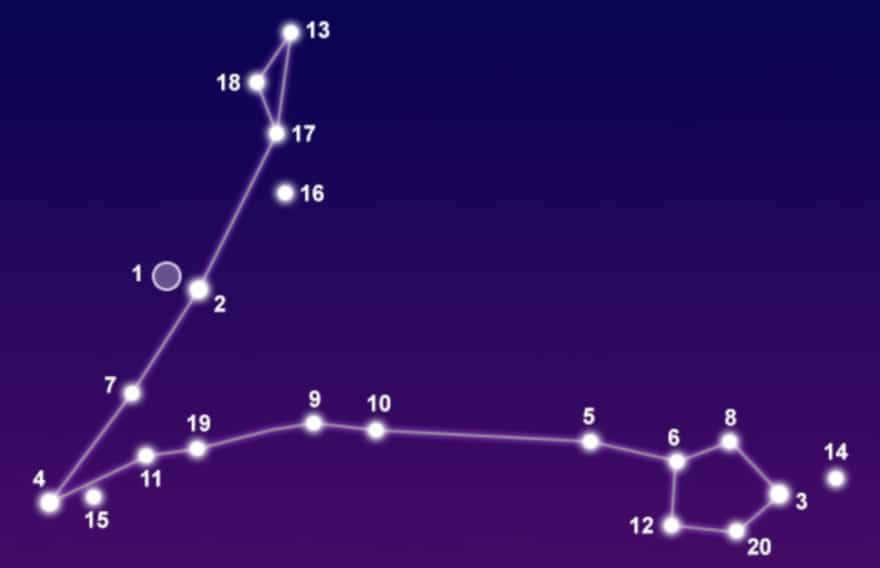
Facts, Position, and Map
Pisces is the 14th largest constellation, covering an area of 889 square degrees. It occupies the first quadrant in the northern hemisphere (NQ1) and can be observed at latitudes ranging from +90° to -65°. It is bordered by Andromeda, Whale, Aquarius, Pegasus, Aries, and Triangle.
Pisces is home to various celestial objects, including the spiral galaxy Messier 74 (NGC 628) and 10 stars known to have planets. The brightest star in Pisces is Eta Pisces, which has an apparent visual magnitude of 3.62. Additionally, Pisces is associated with the Piscids meteor shower. It is part of the Zodiac group, which also includes Aries, Taurus, Gemini, Cancer, Leo, Virgo, Libra, Scorpio, Sagittarius, Capricorn, and Aquarius. Explore a star map to locate the constellation Pisces.
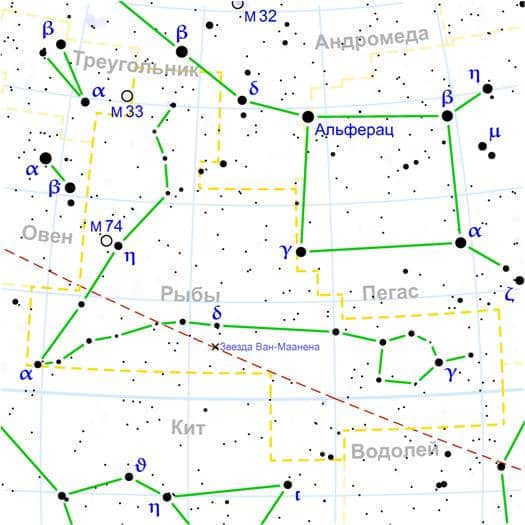
Legend
Pisces has its origins in ancient Babylonian mythology. It was depicted as a pair of fish connected by a rope. The Romans also recognized it, associating it with Venus and Cupid. According to their version, the fish transformed themselves into fish and tied themselves together with a rope to escape from the monster Typhon. The star Alpha Pisces represents this rope.
Ancient Greek mythology also has its own legends about Pisces. After the gods of Olympus defeated the Titans in a great war, they imprisoned them along with Gaia, the mother Earth, in Tartarus. However, the most fearsome monster in the world, Typhon, was also imprisoned there. Typhon is described as a dragon with a hundred heads and fiery eyes.
Gaia dispatched it to battle against the deities. The initial individual to perceive the danger and sound the alarm was Pan. Fleeing, he underwent a transformation into a goat, but plunged into the Nile prematurely, resulting in him becoming half fish as well (Capricorn). Aphrodite and her son Eros sought aid from the nymphs and sought refuge in the river. According to one account, two fish answered their plea and ferried them to safety on their backs. Alternatively, they may have assumed fish form themselves and swam to safety.
Notable Celestial Bodies
Examine in detail the prominent celestial bodies within the Pisces constellation, complete with comprehensive explanations and categorization.
This specific Pisces entity is a luminous yellow star, classified as a G7 IIIa. It possesses an apparent visual magnitude of 3.62, making it the most brilliant object within the constellation. Additionally, it is located at a distance of 294 light-years from Earth. In close proximity to this star, there exists a faint companion, separated by a mere angular second.
With a luminosity 316 times greater than that of the Sun, this star is significantly more massive, approximately 3.5-4 times, and has a size 26 times larger. Informally, it is referred to as Cullatus Nunu. The name “Nunu” stems from the Babylonian word for “fish,” while “kullat” represents a cord utilized to connect fish.
Gamma Pisces is a bright yellow star known as a yellow giant (G9 III). It has a visual magnitude of 3.699, making it the second brightest star in its constellation. Located at a distance of 138 light-years from Earth, Gamma Pisces is a massive star, being 10 times larger than our Sun and 61 times brighter. With an age of 5.5 billion years, it has been shining in the night sky for a long time. This star is a part of the Pisces Ring asterism, adding to its celestial beauty. Interestingly, Gamma Pisces will continue to move away from the Sun, gradually drifting by ¾ of an arc second every year.
Another notable star in the Pisces constellation is Omega of Pisces. This star is a yellow-white subgiant (F4IV) with an apparent magnitude of 4.036. It is located at a distance of 106 light-years from Earth. Omega of Pisces is the first star to the east of the Pisces Ring, making it an important reference point for astronomers. It is believed to be a close binary system, meaning it may consist of two stars orbiting each other. If it is indeed a single star, it has a mass 1.8 times that of our Sun and is 20 times brighter. Either way, Omega of Pisces shines brightly in the night sky, captivating observers with its beauty and mystery.
Iota Pisces is a dwarf star of yellow-white color (F7 V) with a visual magnitude of 4.13 and located at a distance of 44.73 light-years. It is larger and brighter than our own Sun. There are two line-of-sight companions that are believed to be associated with this star.
Omicron Pisces is a giant star of yellow color (G8 III) with a visual magnitude of 4.26 and is located at a distance of 142 light-years. It was first observed and recorded as Torcularis septentrionalis in the 1515 Almagest.
Alrisha, also known as Alpha Pisces, is a close double star system with a combined visual magnitude of 3.82 and is located at a distance of 139 light-years. The two stars in this system are separated by 1.8 arc seconds. The primary star is classified as a star of spectral type A0p and has a visual magnitude of 4.33. The companion star, classified as a star of spectral type A3m, has a visual magnitude of 5.23. These two stars have an orbital period that spans over 700 years.
The initial body consists of 2.3 solar masses and is 31 times more luminous, while the second body is 1.8 times more massive and 12 times brighter.
The customary designation is derived from the Arabic term al-rišā, which translates to “well rope”. The star is occasionally referred to as Okda, meaning “knot”.
Epsilon of Pisces is categorized as an orange giant (K0 III) with a visual magnitude of 4.28 (slightly larger and brighter than the Sun) and located at a distance of 182 light-years. It is an intriguing eclipsing binary star system, comprising of two objects of equal magnitude, separated by 0.25 arc seconds.
Theta Pisces is an orange giant (K1 III) with a visual magnitude of 4.27 and positioned 159 light-years away. It is brighter than the Sun but exhibits cooler temperatures.
The primary entity is a massive orange star (K5 III) that spans 43.1 times the size of our Sun and shines 380 times brighter. The accompanying star, which has a magnitude of 13, is located 2 minutes away in terms of angular distance. It is either a dwarf star (K9) or a star that happens to be aligned with our line of sight.
Nu Pisces, also known as 51 Kita, is an orange giant star (K3IIIb) that appears with a magnitude of 4.448 and is situated 370 light years away. It is cooler than our Sun, but it has a mass 1.9 times greater and a radius 34 times larger.
Beta Pisces, referred to as “Fum al Samakah” in Arabic, is a blue-white star (B6Ve) with a visual magnitude of 4.53. It is located 492 light-years away and represents the “mouth of the fish.”
Van Maanen’s star is a white dwarf (DZ8) with a visual magnitude of 12.374 and a distance of 14.1 light years. It is considered the closest dwarf to the Sun after Sirius B and Procyon B. It is also the nearest single white dwarf. The spectrum of the star contains metals, which are elements heavier than helium.
The star is located 2 degrees south of Delta Pisces. It has a mass of 63% of the Sun’s mass and a radius that is only 1% of the Sun’s radius. Its age is estimated to be 3 billion years. Dutch-American astronomer Adrian van Maanen discovered it in 1917.
19 Pisces (TX Pisces) is a red star (C5III) with a magnitude swing of 4.9-5.5 and a distance of 760 light years. It is one of the most well-known red stars. This star is a variable carbon star, meaning it belongs to the late type and has an atmosphere dominated by carbon instead of oxygen. It resembles a red giant or sometimes a red dwarf.
107 Pisces is a type of star known as an orange main-sequence dwarf (K1V). It has a variability in brightness, with an apparent magnitude ranging from 5.14 to 5.26. The star is located at a distance of 24.4 light-years from Earth and has an estimated age of 6 billion years. Previously, it was designated as 2 Aries. Additionally, there are two other stars that can be seen alongside 107 Pisces.
Another star in the Pisces constellation is 96 G. Pisces, also known as HD 4638. It is an orange main-sequence dwarf (K2 V) with a visual magnitude of 5.75. The star is located at a slightly closer distance of 24.31 light-years from Earth. It is older than our Sun, with an estimated age of 5.4 billion years.
There is also a third star in the Pisces constellation, designated as 54 Pisces. It is an orange dwarf (K0 V) with an apparent visual magnitude of 5.88. The star is located at a greater distance of 36.1 light-years. In 2002, a planet was discovered in its orbit, and in 2006, a brown dwarf was also found.
Comparing to our Sun, 107 Pisces has approximately 76% of its mass, 94.4% of its radius, and 46% of its brightness. The star has an age of 6.4 billion years. The brown dwarf, known as T7.5B, is 50 times the mass of Jupiter (equivalent to 0.051 times the mass of the Sun). It was the first brown dwarf ever discovered around a star that also has an exoplanet in its orbit.
The planet has a mass similar to Saturn and revolves around the star at a distance of 0.28 a.u. (the same distance as Mercury’s orbit). It completes its orbit in 52 days.
6 G. Pisces (HD 217107) is classified as a yellow subgiant (G8 IV) with a visual magnitude of 6.17 and is located 64.8 light-years away. It has a mass equivalent to 98% of the Sun’s mass and a radius 1.31 times larger. Its age is estimated to be 7.7 billion years. Two planets have been discovered in its orbit, with orbital periods of 7.1 days and 8 years.
In 1690, astronomer Jan Hevelius divided the constellation Pisces into four sections: the North Fish, the North Cord, the South Cord, and the South Fish.
The stars Sigma, 68, 65, 67, Psi1, Psi2, Psi3, Hi, Phi, Ypsilon, 91, Tau, 82, and 78 Pisces represent the North Fish.
The South Fish is formed by the stars Omega, Iota, Theta, 7, Beta, 5, Kappa, 9, Lambda, and TX (19) Pisces.
The North Cord is composed of the constellations Chi, Rho, 94, VX (97), Eta, Pi, Omicron, and Alpha Pisces.
The Southern Cord includes the constellations Alpha, Xi, Nu, Mu, Zeta, Epsilon, Delta, 41, 35, and Omega of Pisces.
The Diadema, also known as the Ring of Pisces, is an asterism located to the south of the constellation Pegasus. It is made up of the stars Gamma, Kappa, Lambda, TX, Iota, and Theta of Pisces.
The Turtle constellation is represented by the stars 24, 27, YY (30), 33, and 29 of Pisces. In 1754, astronomer John Hill proposed that this area of Pisces be recognized as a separate constellation called Turtle. However, his suggestion was largely ignored by the scientific community at the time.
Celestial bodies
Messier 74 (M74, NGC 628) is a spiral galaxy that can be seen with an apparent magnitude of 10.0 and is located approximately 30 million light-years away. When observed from our perspective, it appears “face-on,” allowing us to see two distinct spiral arms of the grand-design type. This galaxy is estimated to contain around 100 billion stars.
Out of all the objects in the Messier catalog, M74 is particularly challenging to observe due to its low surface brightness. Its location is approximately 1.5 degrees east-northeast of Eta Pisces. The discovery of this galaxy can be credited to Pierre Méchain, a French astronomer, who reported it to Charles Messier and had it added to his catalog.
Two supernovae have been observed in M74: SN 2002ap in 2002 and SN2003gd in 2003. SN2002ap is categorized as a rare Type Ic supernova, also known as a hypernova. Hypernovae are supernova explosions that release tremendous amounts of energy and can produce long-term gamma ray bursts, which are the most powerful events in the universe.
A black hole with an intermediate mass of 10,000 Suns was hinted at when a source of ultra-bright X-rays was found in March 2005. This source produced more power than a neutron star in just 2 hours. It was given the designation CXOU J013651.1 + 154547.


A stunning photograph taken by the Hubble Space Telescope showcases a spiral galaxy known as Messier 74, which belongs to the grand-design type. This galaxy is part of a small group called M 74 group, located in the constellation Pisces. Messier 74 is the brightest member of this group, but there are also other interesting celestial objects in the vicinity, including the peculiar spiral galaxy NGC 660 and a few smaller irregular galaxies.
In addition to Messier 74, there is another remarkable cosmic structure known as CL 0024+1654, which is a massive galaxy cluster comprised mainly of yellow elliptical and spiral galaxies. The gravitational lenses within this cluster create fascinating arc-shaped images in the background.
The distance between Messier 74 and Earth is approximately 3.6 billion light-years, while the back galaxy is even farther away, at a staggering distance of 5.7 billion light-years.
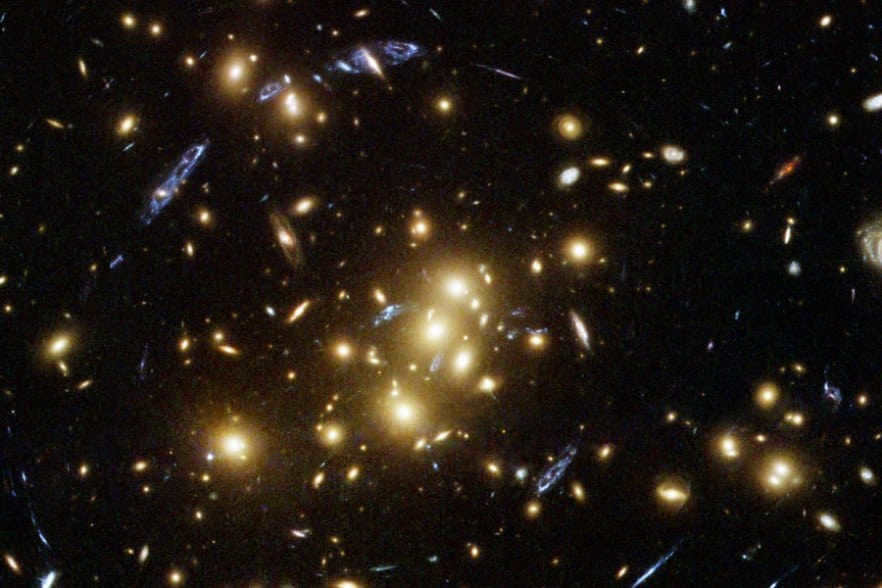

Hubble captured an image of CL 0024+1654 in November 2004. Scientists were able to determine that the background forming galaxy has distinct images at 4, 10, 11, and 12 hours from the center of the cluster due to its unique shape. Additionally, the blue spot near the center represents another image of the same galaxy. In a recent analysis, researchers identified a total of 33 images belonging to 11 separate galaxies.
3C 31 (NGC 383) is a unique double radio galaxy with a noticeable visual magnitude of 13.4 and a vast distance of 209 million light years. It has a striking resemblance to a quasar and has been included in the Atlas of Peculiar Galaxies. This galaxy is not only visually captivating but also a powerful source of radio waves.
Scientists classify 3C 31 as an active galaxy due to the presence of a supermassive black hole at its core. This black hole is responsible for the expansion of galactic jets, which can stretch across millions of light-years. Additionally, there are several neighboring galaxies in close proximity to 3C 31, including NGC 379, NGC 380, NGC 385, and NGC 384, which further contribute to the intricate cosmic web.
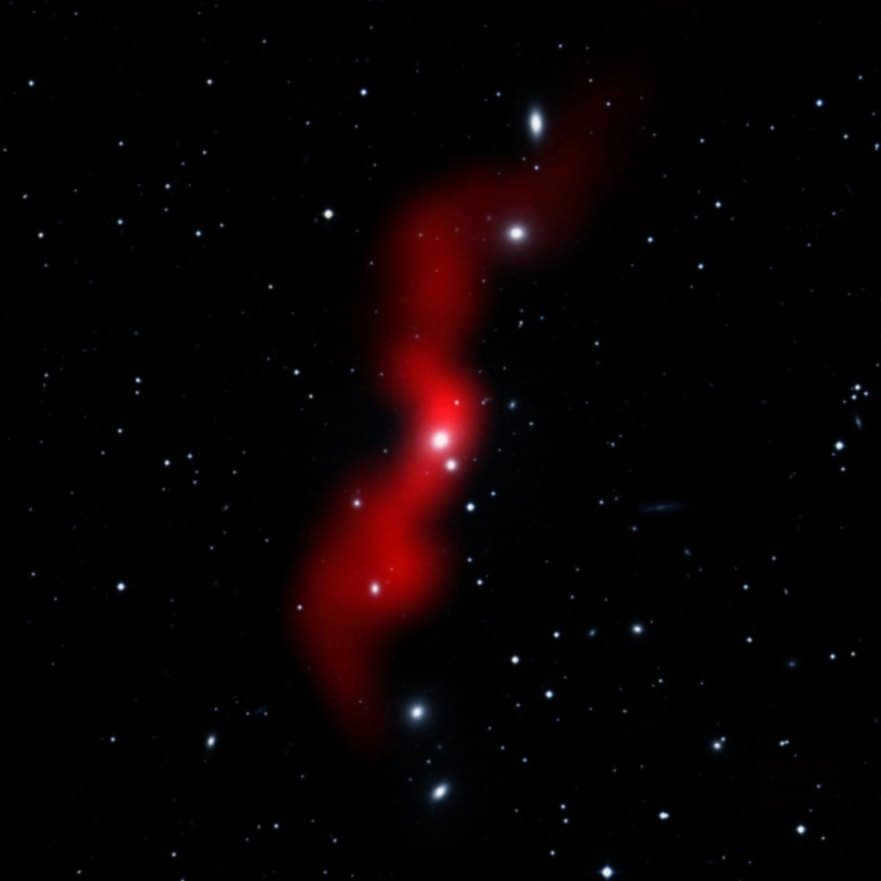

3C 31 is a radio galaxy, formed by merging visible light data from the Digital Sky Survey with radio waves from the NVSS survey (shown in red). The presence of a supermassive black hole at the galaxy’s core leads to the creation of long radio jets.
CGCG 436-030 (PGC 4798) is a spiral galaxy with a visible magnitude of 14.9 and is located approximately 400 million light-years away.
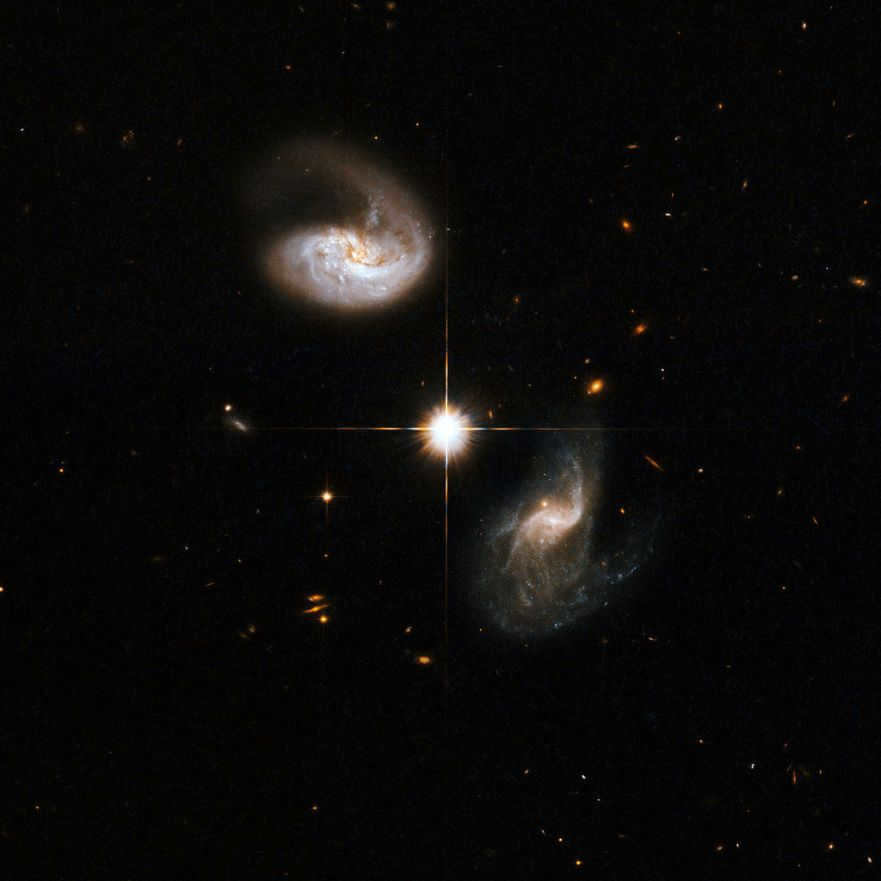
The Pisces Dwarf Galaxy (PGC 3792) is an irregular dwarf galaxy located in the Triangle constellation. It is a member of the Local Group of galaxies and may potentially be a satellite galaxy of Messier 33. With an apparent visual magnitude of 14.2 and a distance of 2.51 million light-years, this galaxy was discovered in 1979 by Russian astronomer Valentina Karachentsova.
The majority of stars in the Pisces Dwarf Galaxy were formed approximately 8 billion years ago. However, over the past 10 billion years, the galaxy has experienced a decline in star formation activity. Despite this, young hot stars can still be found in its outer regions.
Arp 284, consisting of NGC 7714 and NGC 7715, is a pair of interacting galaxies that was first observed by John Herschel in September 1830.
NGC 7714 is a spiral galaxy with an apparent visual magnitude of 12.2, while NGC 7715 is classified as a boundary spiral or irregular galaxy. In September 1999, a supernova known as SN 1999dn was discovered in NGC 7714.
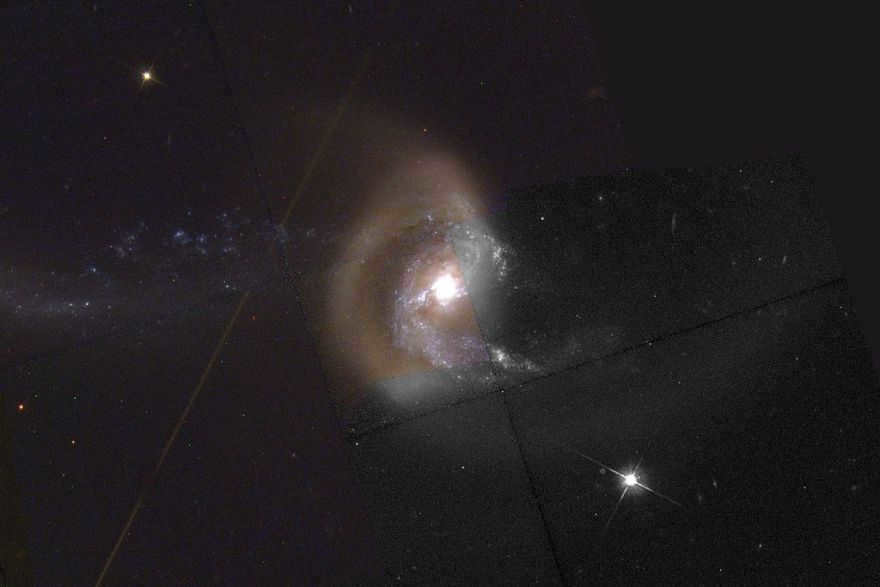
NGC 474 is a massive elliptical galaxy situated at a distance of 100 million light-years. It is notable for its intriguing tidal tails, whose origins remain a mystery.
NGC 520 consists of a pair of interacting spiral galaxies, boasting an apparent magnitude of 12.2 and residing 90.7 million light-years away. This celestial formation also possesses an H II nucleus.
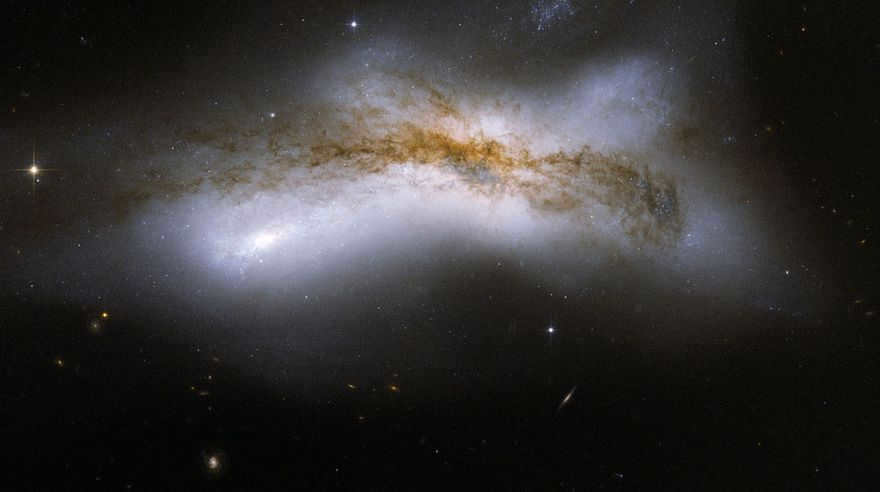
NGC 7459, which was discovered by American astronomer Lewis Swift in 1886, is a unique double spiral galaxy with two galactic nuclei positioned at 15 angular seconds. Its apparent visual magnitude measures 15.2.
NGC 514, on the other hand, is an intermediate spiral galaxy that boasts an H II nucleus. Situated at a distance of 95.9 million light years away, its apparent visual magnitude stands at 12.2.
NGC 57, categorized as an elliptical galaxy, catches the eye with its apparent visual magnitude of 12.7. Interestingly, on June 3, 2010, a supernova with a magnitude of 17 was discovered by Koichi Itagaki.
Lastly, NGC 60, which is situated 500 million light-years away, is a spiral galaxy that exhibits an apparent visual magnitude of 14.85. Notably, it features unusually distorted spiral arms, which could potentially be attributed to the interaction and gravitational influence of neighboring galaxies. However, the puzzling fact is that there are simply no nearby galaxies in its vicinity.
If you want to get a more detailed understanding of the Pisces zodiac constellation, you can utilize not just our collection of photos, but also 3D models and an online telescope. To aid in your personal exploration, a star map will prove to be quite helpful.
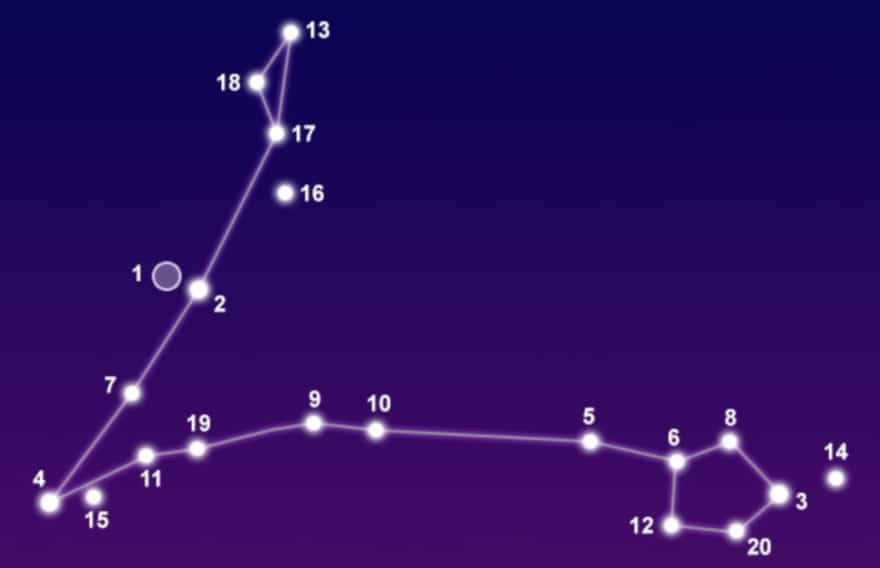
Pisces
– A large zodiacal constellation situated between Aquarius and Aries. It is commonly divided into “northern Pisces” (located below Andromeda) and “western Pisces” (positioned between Pegasus and Aquarius).
Many individuals are unaware of the appearance of the Pisces constellation in the night sky primarily because its stars lack brightness. It is rather faint on its own and cannot be seen at all times throughout the year. By mentally connecting the most prominent stars, one can form an acute angle with a triangular top. On a straight horizontal line, the zodiacal symbol appears as three faint points, though still noticeable to the human eye.
In the Northern Hemisphere, one can observe the constellation Pisces during the early autumn season. This constellation, although not easily noticeable in the night sky, is rather dim. However, it contains numerous fascinating celestial objects.
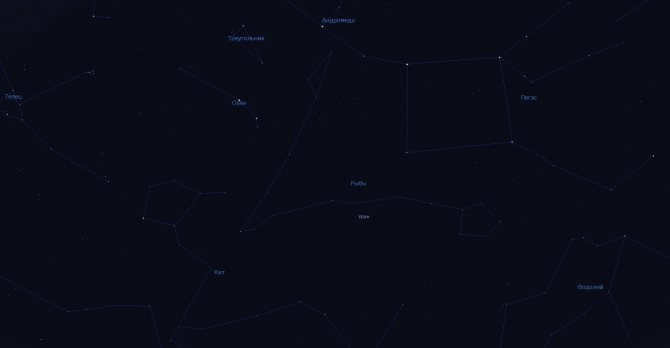
Observe in the planetarium software
Pisces can be found on the star chart between Aries and Aquarius. One of the Pisces extends towards Andromeda, while the other reaches towards Pegasus. Pisces is connected by an imaginary ribbon. The starting point of the constellation is known as the star Alrisha.
The Sun passes through the constellation of Pisces in a span of 38 days. According to the modern calendar, this occurs between March 12 and April 18.
The constellation is made up of two distinct groups: North Pisces (composed of three stars) and West Pisces (which consists of seven stars).
People Who Live Close By
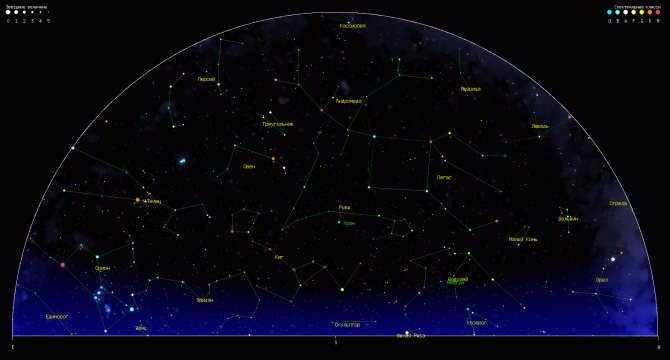
The constellation Pisces is surrounded by other constellations such as Aries, Triangle, Whale, Andromeda, Pegasus, and Aquarius.
If you imagine the shape of Pisces as a geometric figure, it can be described as two rays intersecting at an acute angle. The northern ray extends to form a triangle with obtuse angles, while the western ray does not form an equilateral pentagon.
Pisces is in close proximity to other larger and more prominent constellations like Aquarius, Aries, Triangle, Andromeda, Pegasus, and Whale.
“Regarding Pisces, the stars in the head region of the southern fish are influenced by Mercury and, to some degree, Saturn; the stars on the body are influenced by Jupiter and Mercury; the stars on the tail and the southern part of the bundle are influenced by Saturn and, to some extent, Mercury. As for the northern fish, the stars on its body and spine resemble the effects of Jupiter and, to some extent, Venus; the stars in the northern part of the bundle, resemble Saturn and Jupiter; and the bright star at the conjunction, resembles Mars and, to some extent, Mercury…”
Claudius Ptolemy. On the influence of the stars. “Tetrabiblos,” 2nd century
"At present, astronomy is not a mandatory subject in schools and is instead offered as an elective. As a result, I anticipate that there will be individuals who would appreciate an exploration of the Pisces constellation through visual aids, diagrams, and a discussion of its historical and mythological significance.
The Pisces Constellation
Figure 1. Pisces Constellation, ♓ Pisces, diagram
Among the various constellations in the zodiacal group, the Pisces constellation (♓ Pisces) [1]
In terms of angular area, Pisces is ranked as the fourth largest constellation. It ranks 14th in terms of overall area on the celestial sphere (firmament), and is the seventh largest constellation in the Northern Hemisphere (889 sq. deg.), after Volopassus. The constellation of Pisces is intersected by the celestial equator near its southern boundary, and the line of the ecliptic at the vernal equinox intersects with western Pisces. As Pisces is primarily located in the Northern Hemisphere, it is classified as a northern equatorial constellation [2]. This constellation is bordered by six other constellations, including Aries, Triangle, Andromeda, Pegasus, Aquarius, and the Whale. Currently, the Sun is passing through Pisces from March 12 to April 18 (37 days), making Pisces share the third and fourth place with Leo in terms of the length of the occupied section of the ecliptic. In Russia, Pisces is a waning constellation and is fully visible with a declination ranging from -7° to +33°. The Pisces constellation reaches its midnight climax from September 4 to October 23. In Moscow and its suburbs, as well as at the latitude of Moscow, Pisces can be observed in its entirety from June to February.
Stars and arrangement of the Pisces constellation
The Pisces constellation does not contain any prominent or guiding stars. [3]
Indeed, the three most notable celestial bodies are distinguished by a brightness of just the fourth magnitude – these include Alfargus (η Psc, 3.62m), Symmachus (γ Psc, 3.70m), Alrisha (α Psc, 3.82m). Despite the modest appearance of the stars in this constellation, anticipation builds when the Sun enters the Pisces constellation because it encompasses the vernal equinox point (where the ecliptic and celestial equator intersect). In fact, astronomical spring follows once the Sun surpasses the vernal equinox point! Likely due to the constellation’s symbolic significance, names have been assigned to five of its twenty fifth magnitude stars: Jeneb Al Samkat (ω Psc, 4.03m); Torcularis (Torcularis Septentrionalis, ο Psc, 4.26m); Lintaeum (δ Psc, 4.44m); Fum Al Samaka (β Psc, 4.48m); Anunithum (τ Psc, 4.51m); and even one situated almost exactly on the ecliptic line, the sixth magnitude star Revati (ζ Psc, 5.21m). The boundaries of the constellation and majority of the visible stars are depicted in Figure 2, which showcases a view of the Pisces constellation during culmination (this represents the customary perspective of constellations in the field of astronomy):
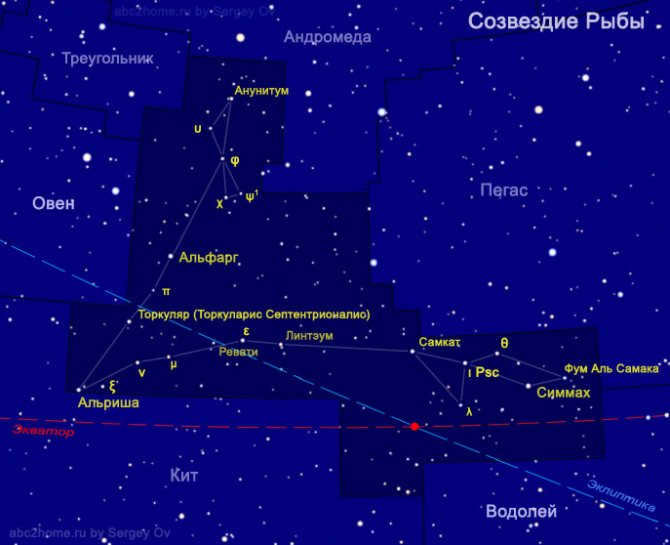
The constellation Pisces, stars that belong to the Pisces constellation
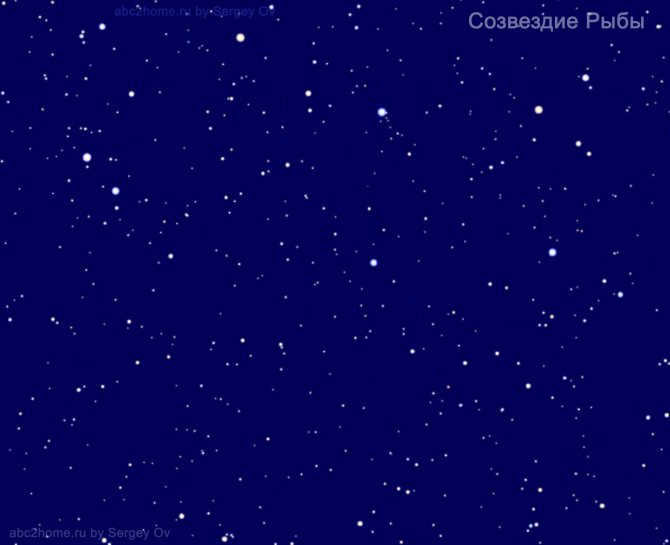
Sergey Ov
The Pisces constellation is a well-known group of stars that has been officially recognized and named by the International Astronomical Union (IAU).
Observing the contours of the Pisces constellation can be quite challenging. By moving the cursor to Figure 2, you can see the individual stars that make up the constellation. To get a better view of the stars, click on the image to enlarge it to full screen.
Recently, the constellation of Pisces used to have three additional landmarks along with the vernal equinox point. One of these landmarks was a star called Cullatus Nununu, which has one of the oldest written names. Another star, with the longest name, was called Torcularis Septentrionalis. Lastly, there was a star with the oldest Vedic name called Revati. However, in 2019, the International Astronomical Union (IAU) started a program to unify star names. As a result, the star η Psc, which used to be referred to as Cullatus Nunu, can now only be called Alfarg. The identity of the name Cullat Nunu for this star remains unproven. Torcularis Septentrionalis has been shortened to Torcularis. Now, the only remaining named celebrity in this constellation is Revati. In the Euro-Middle Eastern tradition, a total of eight stars plus one Vedic star have been given names in the constellation of Pisces.
To find a list of over 160 Pisces stars, their sights, and features, you can access the list: Notable and Visible Stars of the Pisces constellation.
Regrettably, there are no observable objects in the Pisces constellation that are noteworthy enough to be seen with the naked eye.
The star pattern of Pisces is as challenging to distinguish as actual fish in a river. The brightness of the brightest star, Alfarg, corresponds to only the fourth magnitude. To depict schematic images of faint constellations, it is more convenient to utilize a chart where the stars are discreetly ranked by brightness, ensuring that their diameter is proportional to their stellar magnitude (Fig. 3).
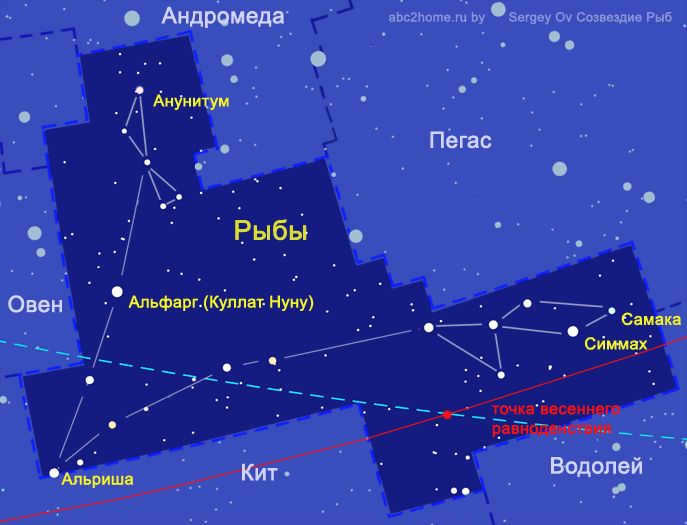
Star chart of the constellation Pisces
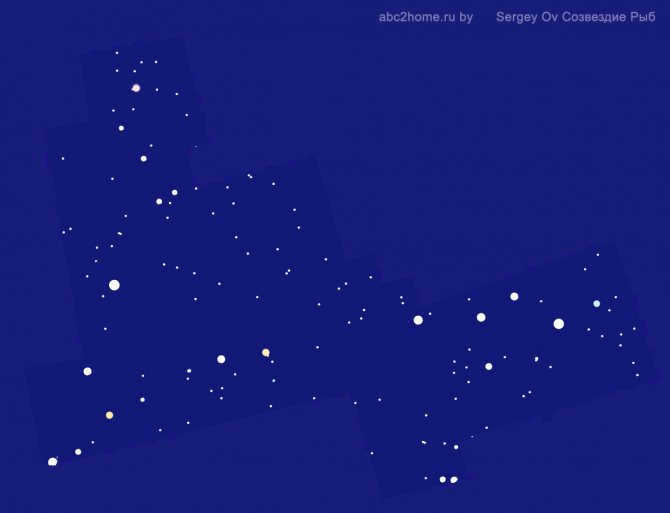
Sergey Ov
Figure 3 shows the constellation Pisces (♓
Pisces – Latin), with the brightest stars marked. This is one of the oldest representations of the Pisces constellation.
In ancient times, astronomers took great care in depicting their constellations. To create a visual representation of Pisces, almost all of the noticeable stars were used (Figure 4):
Diagram of the Pisces constellation using the stars “Pisces”
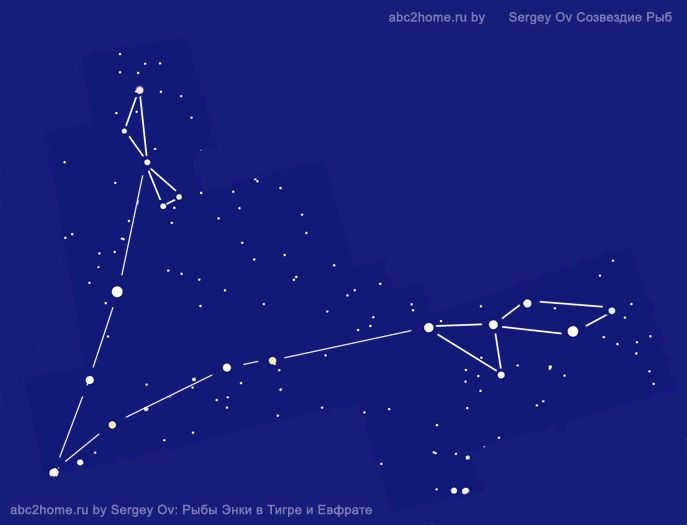
Sergey Ov
A representation of the Pisces constellation is displayed in the diagram. The diagram, created by S. Ov, serves as the fundamental outline for the Pisces constellation in the article “History of zodiac sign Pisces”. To view star designations, simply hover over the diagram with JavaScript enabled.
The schematic visualization of Pisces, as shown in Figure 4, is currently utilized to depict the Pisces constellation on the “Starry Sky of Russia” planetarium map.
If a constellation has numerous stars in close proximity with similar brightness, it is typically feasible to generate multiple graphic designs by connecting the stars with lines. (You can hone this skill by exploring different variations of the Pisces constellation in Fig. 2 or in a larger image by clicking on the picture…).
At the latitudes of Babylon and Alexandria, the zodiacal constellations come close to reaching the zenith, and the ecliptic line is nearly perpendicular to the horizon, resulting in stars that shine so brightly it feels as though they can be touched. On warm nights in the south, gazing at the constellations, ancient philosophers could let their imaginations run wild and spend hours outlining the shapes of the constellations. In our northern territories, it is quite challenging to spot Pisces in the sky, as it does not rise very high above the horizon, and the faint stars of Pisces get lost in the haze. Personally, at my country house in the outskirts of Moscow, I am only able to catch a glimpse of the constellation once or twice a year. Therefore, the most effective way to study the Pisces constellation is to carefully observe and memorize the star patterns on a star chart. The intriguing part is that if children are shown a picture of the constellation’s stars and informed that there are two fish hiding within, they will undoubtedly be able to locate these fish (Fig. 5):
The constellation of Pisces is represented by a contour drawing known as the “Pisces” diagram. This diagram was created by Sergey Ov.
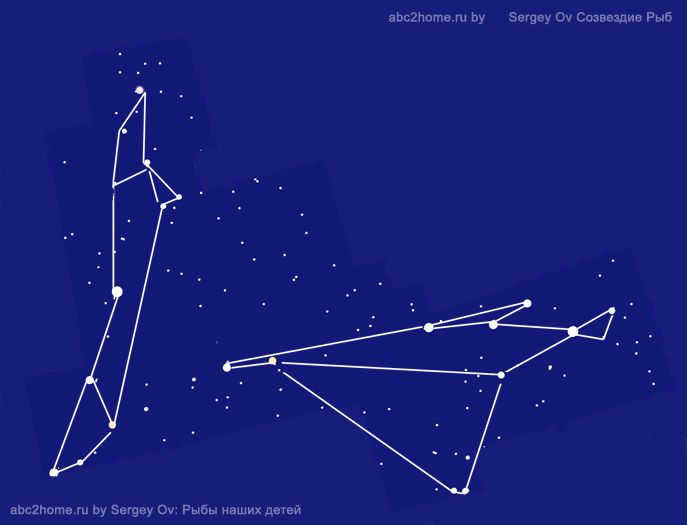
Sergey Ov
Here is a depiction of the Pisces constellation composed of its most prominent stars. Additionally, there is a contour illustration of unique marine fish species. To view the star designations, simply hover your cursor over the image, provided that JavaScript is enabled.
However, the two aforementioned representations do not encompass all the visual interpretations of the constellation’s stars. In the ultimate illustration, which alternates between different depictions of Pisces (Fig.6), you can identify yet another variation:








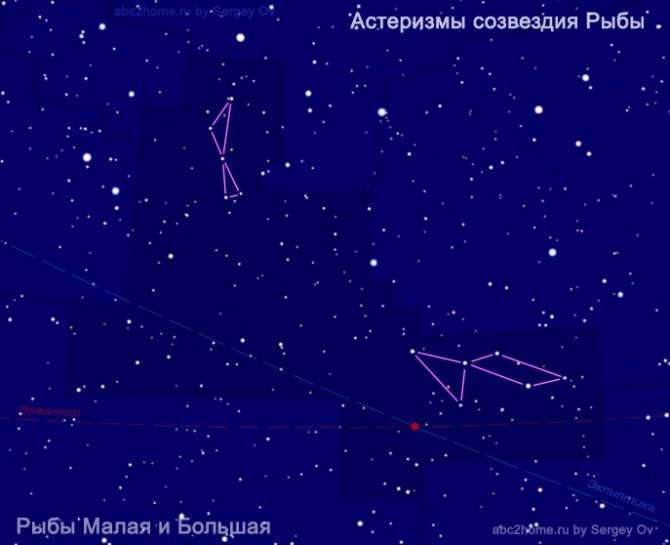
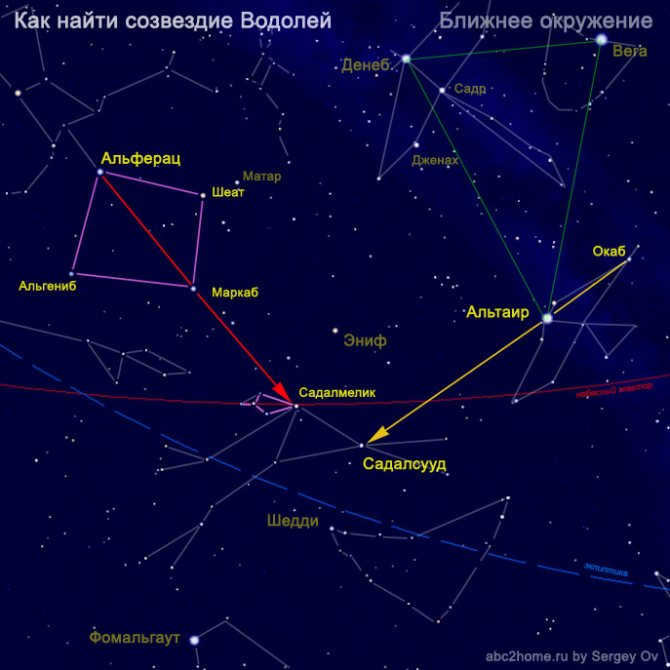
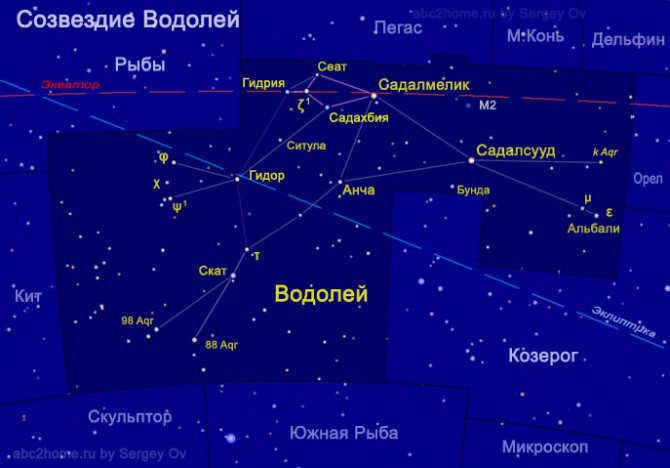
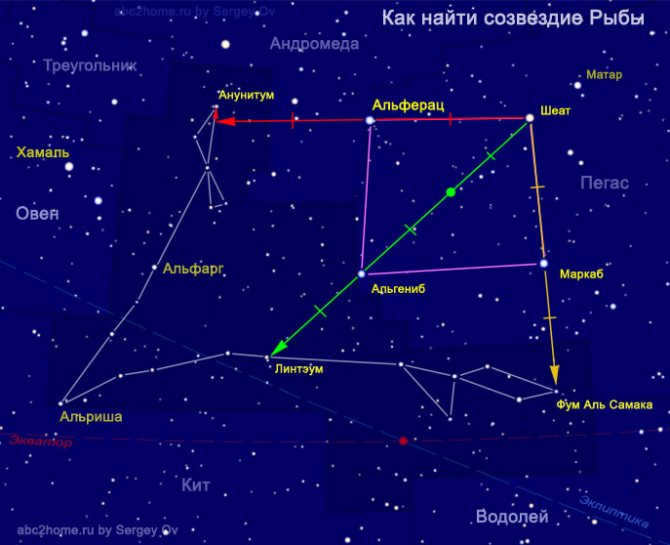
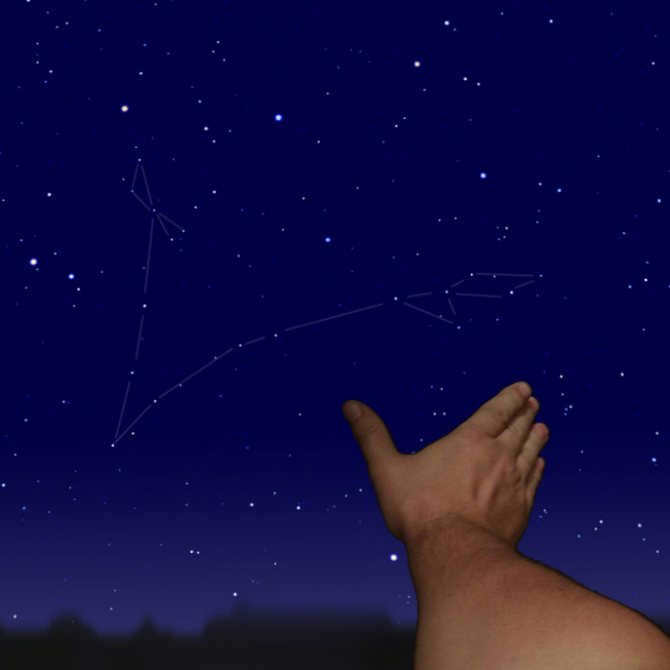
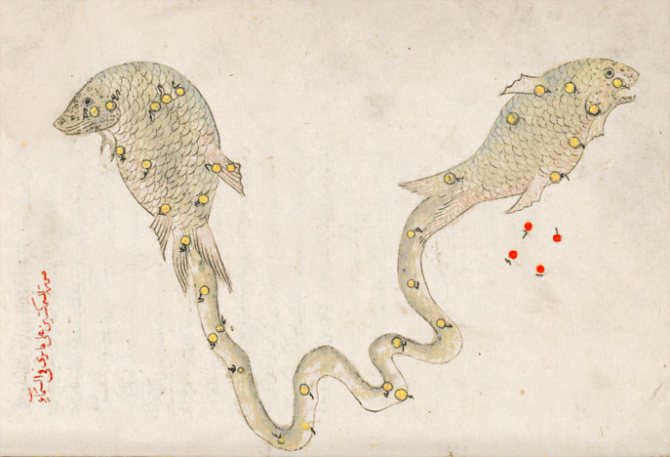
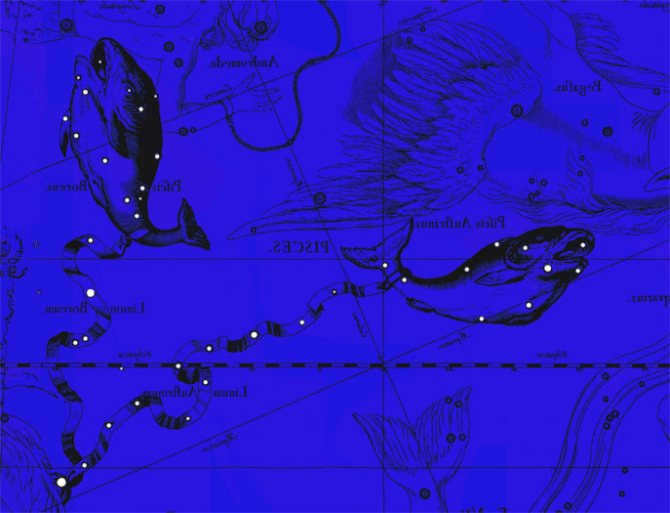
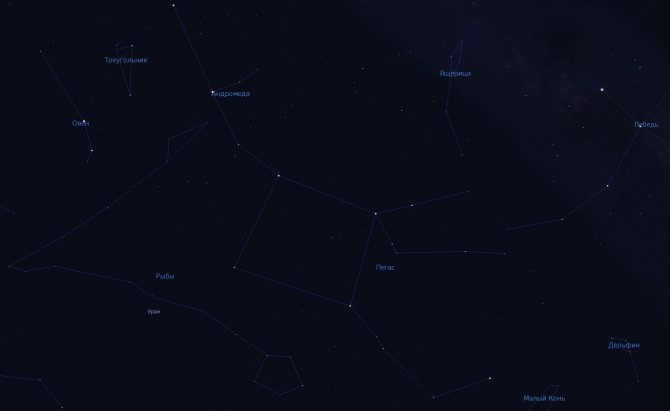
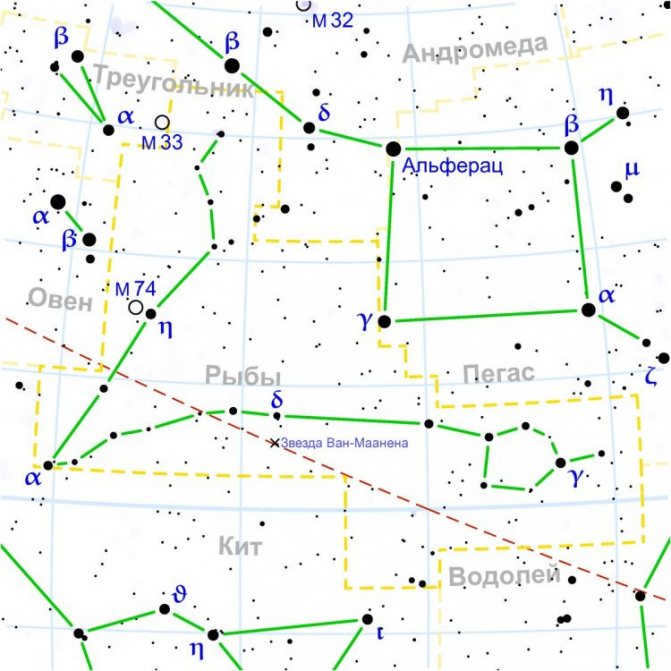


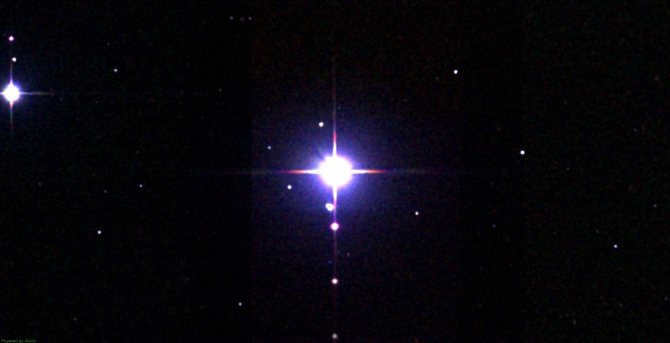
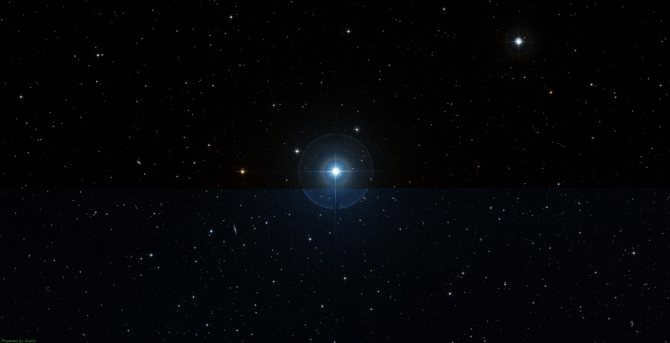
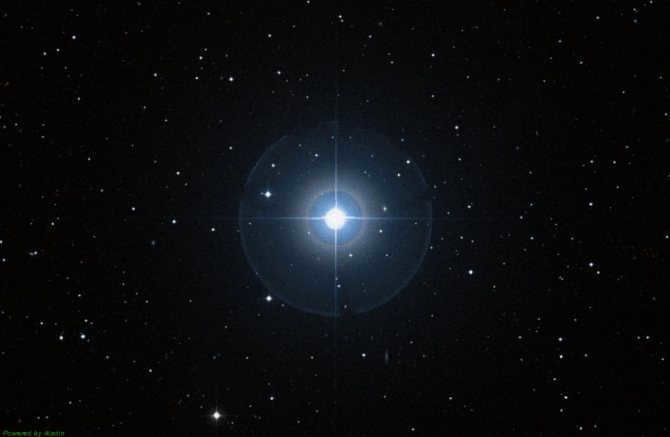
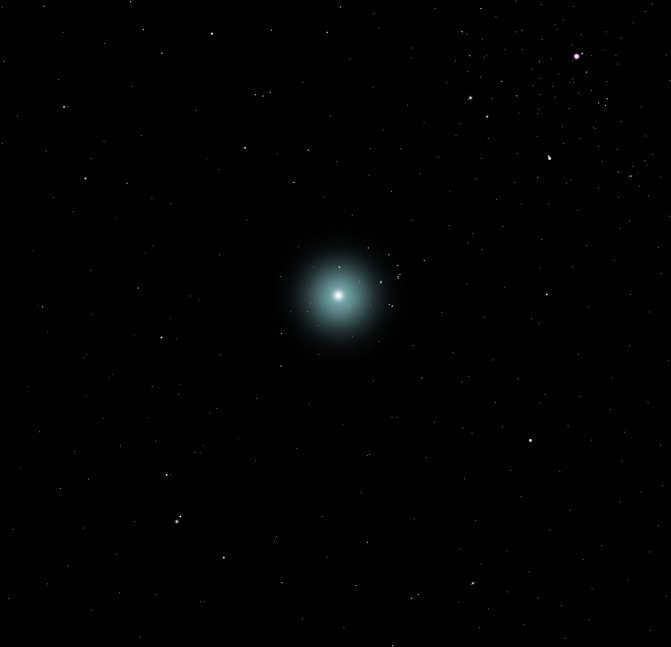
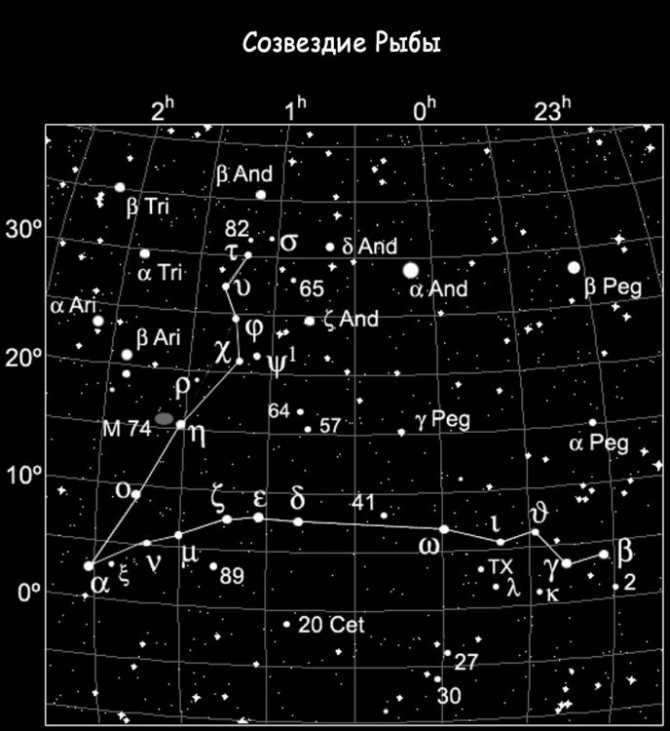
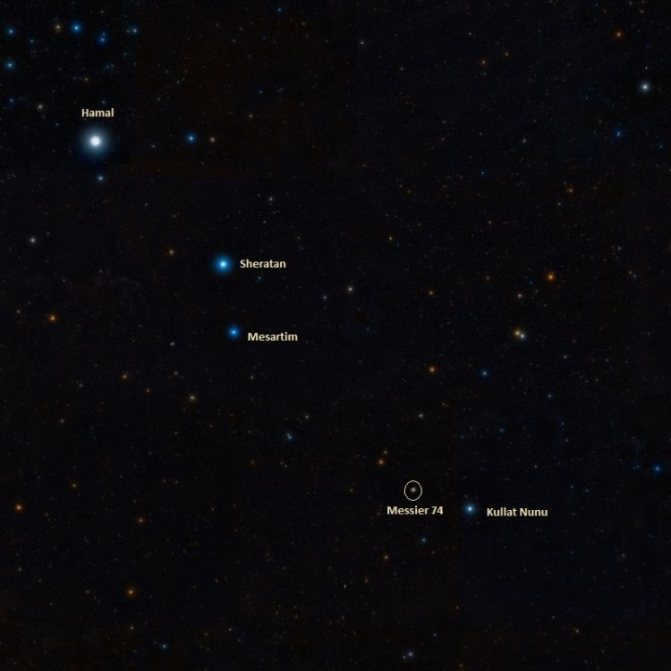
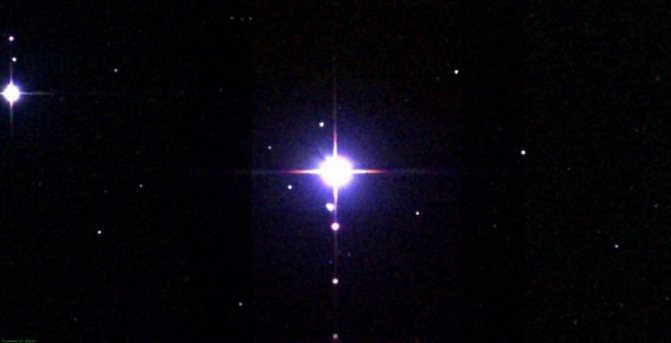
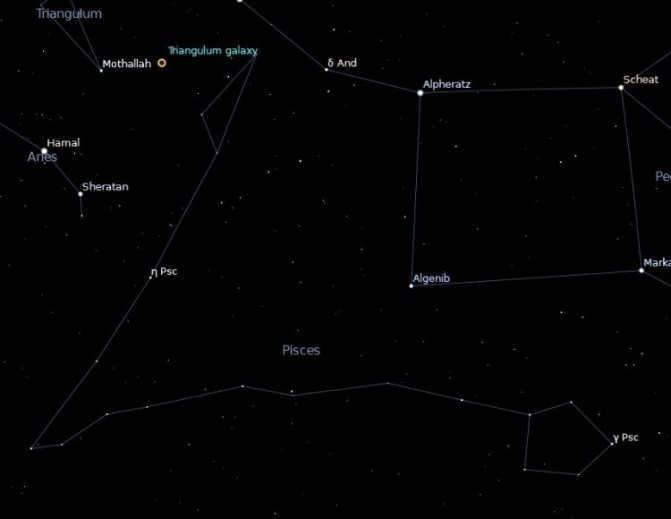
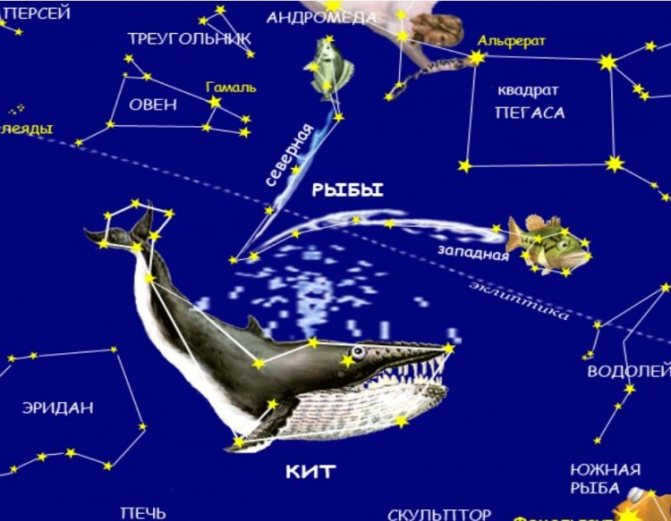

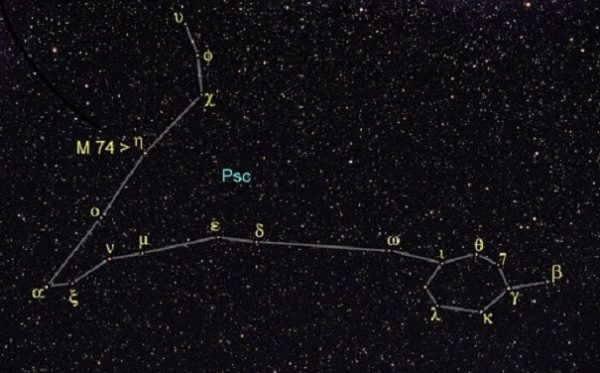
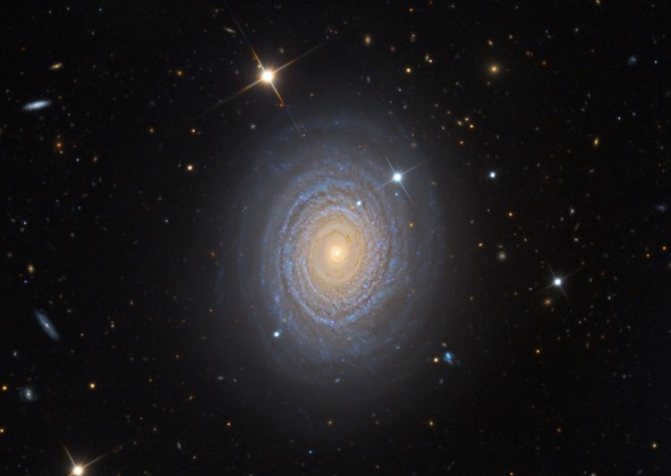
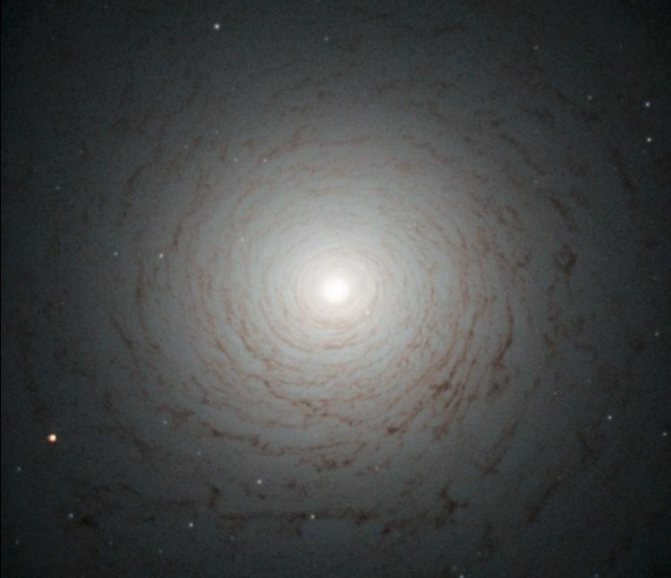
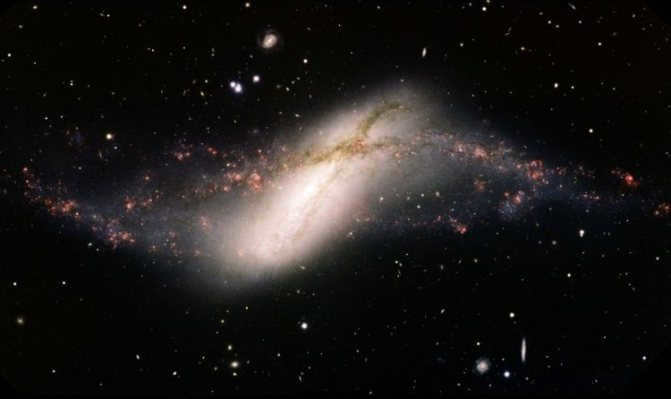
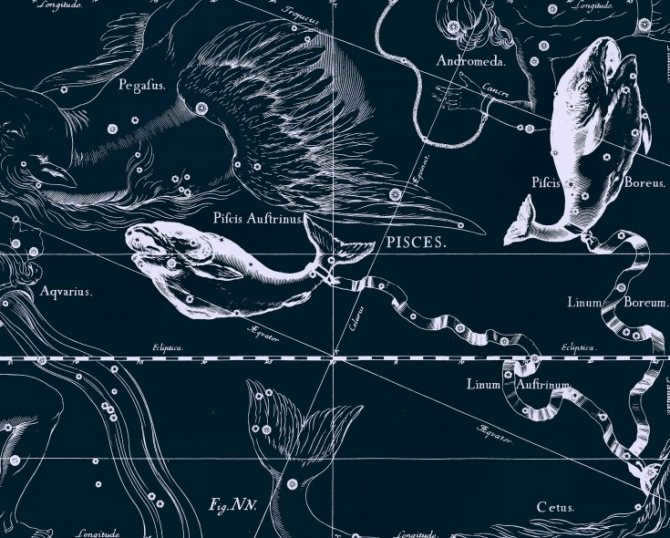
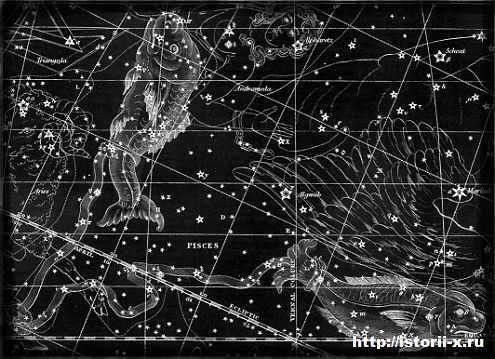

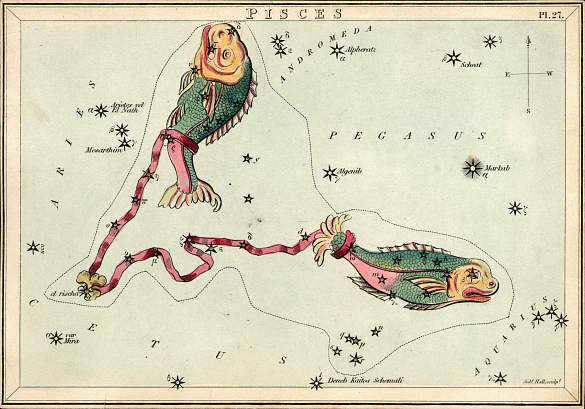
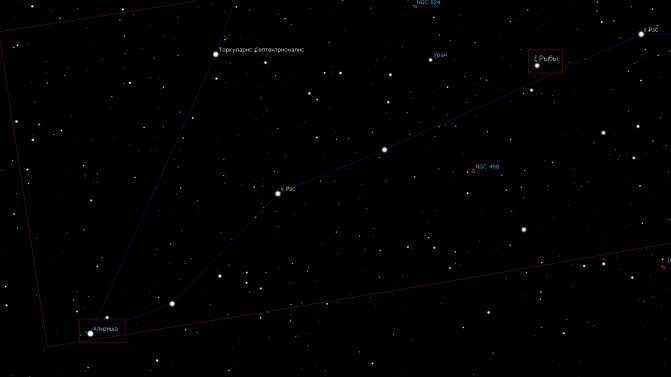

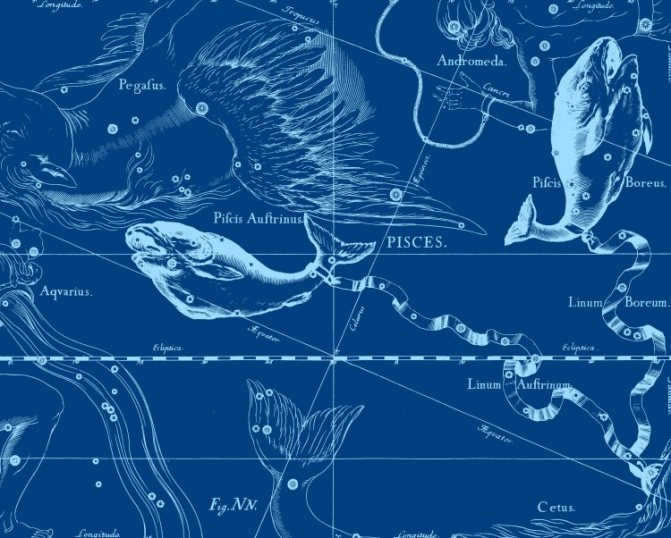
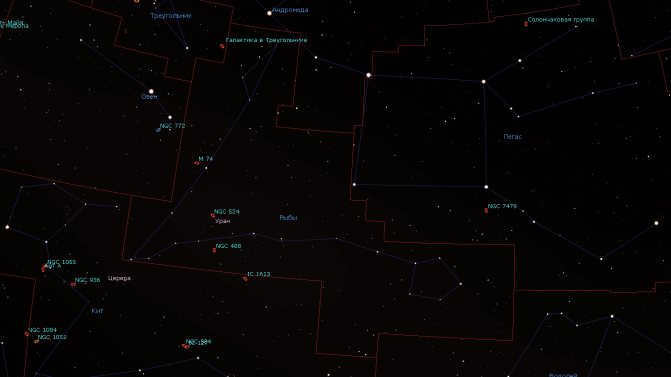
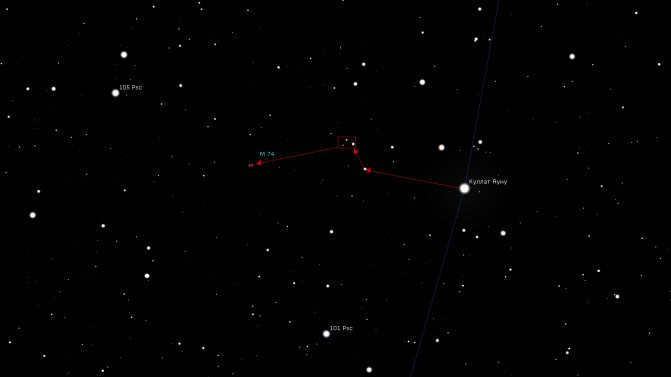
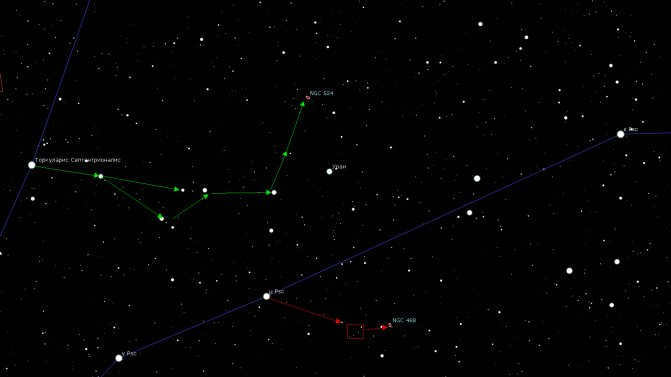
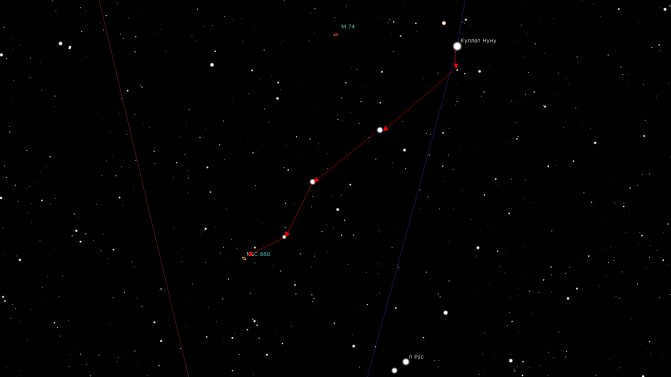
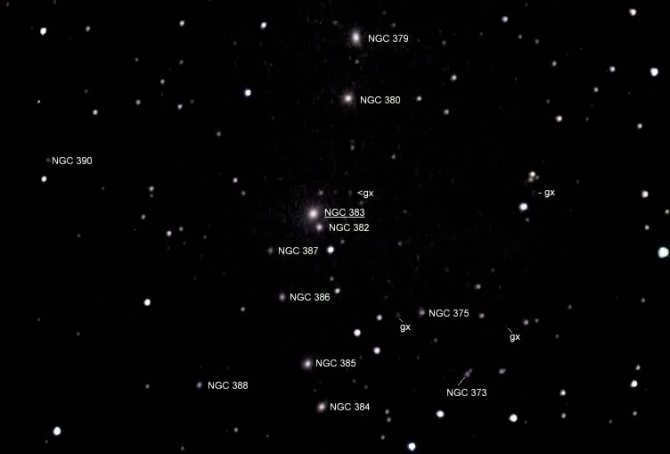
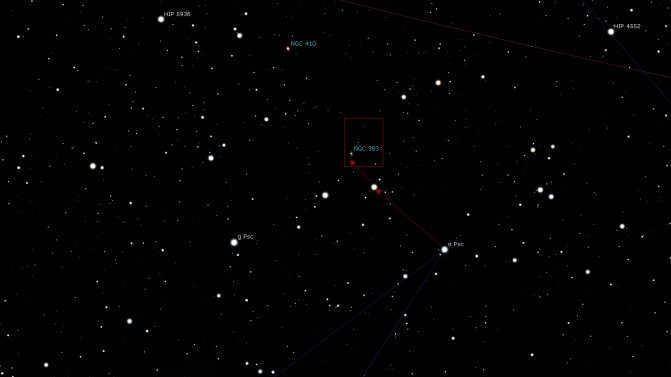
– Pisces, diagram by H. Ray – Pisces, diagram by S. Ove – Pisces, diagram by children – Show all images – Bayer star designations – Hide star designations
Asterisms of Pisces
The asterisms of the Pisces constellation do not represent any new configuration, but rather a fragmentation of various schematic drawings. H. Ray’s drawing has been fragmented into the Northern Fish, the Western Fish (Fig. 7.1), and the Ribbon (Fig. 7.2). Another possibility is to imagine the Ring instead of the Western Fish (Fig. 7.4). In the northernmost part of the constellation, there is a group of five relatively bright stars that form a small, tailed fish – this is known as the “Small Fish” asterism[4]. In the southwestern part, a group of six stars forms the “Big Fish” (Fig. 7.3).

Astronomical patterns of the Pisces constellation. Shapes formed by connecting the stars: 7.1. Traditional patterns North Pisces and West Pisces; 7.2. Classical pattern Ribbon connecting Pisces; 7.3. Patterns Small Fish and Big Fish by Sergey Ov; 7.4. Pattern Ring, preserved in France from the Romans. This image can be manipulated with the following options:
– Pisces: North and West – Ribbon Pattern – Pisces: Small and Large – Ring Pattern – Show all images – Bayer star designations – Hide star designations
Once you have thoroughly studied the schematic outlines, patterns, and relatively bright stars of the Pisces constellation and memorized them visually, you can start locating the constellation directly in the night sky.
How to discover the constellation of Pisces
The constellation of Pisces can be fully or partially seen from May to February, depending on the latitude. For a more detailed observation, the best time to observe the constellation of Pisces is from August to January. It is located adjacent to the southeast side of the Cassiopeia constellation. However, none of the bright stars in Cassiopeia align with any of the bright stars in Pisces.
Step 1. Locating the position of the Big Square stars (How to locate the Big Square) The stars in the Cassiopeia constellation provide a precise guide to finding all four corners of the Big Square, which consist of three stars from Pegasus and one from Andromeda: Alpha Andromeda Alferatz; then Sheath (β Peg); Macrab (α Peg) and Algenib (γ Peg).

To locate the Big Square asterism using the stars of Cassiopeia, if the arrangement of sight lines appears a bit perplexing, simply move the cursor – the lines will appear smaller.
The most prominent sight line in Figure 10 is depicted by the red line: Seguin (ε Cas) – Rukba (δ Cas) – Macrab (α Peg). The following line, formed by the brightest stars of Cassiopeia, represents the emerald arrow Navi.
(γ Cas) –
Achird (η Cas) – Algenib (γ Peg) – in fact, the bottom of the square is located, the remaining corners can be determined based on the square’s properties… To locate the stars near Cassiopeia, Alferatz (α And) and Sheath (β Peg), a lesser-known and dim star is utilized. Fulu (ζ Cas), respectively, the lines of sight are: golden, Shedar – Fulu – Alpheratz; lilac, Rukba – Fulu – Sheat.
Step 2. Determining the positions of the stars of the Pisces constellation using the Big Square asterism
Only in perfectly clear water and a cloudless sky can the very dim stars of Pisces be clearly seen. To distinguish these stars from the multitude of others that are almost identical, it is essential to create a search algorithm that can accurately determine their position. This requires finding sighting variations for the Pisces stars that not only ensure precise targeting, but also enable a more or less accurate estimation of their distance. The Big Square asterism offers three such options (Fig.9).

Discovering the Pisces constellation with the assistance of the Big Square asterism
If you extend the line from Sheat (β Peg) to Macrab (α Peg), you will find the star Pisces at the same distance. Fum Al Samaka (β Psc, 4.48m) is shown in Figure 9 with a golden arrow. The line of sight passes through the diagonal of the Great Square Sheat (β Peg). Following Algenib (γ Peg) will take you to the star Lintaeum (δ Psc, 4.44m), but the distance will not be half the diagonal length (green line in Fig.9). Unfortunately, sighting along the upper side of the Big Square from Sheath (β Peg) to Alferatz (α And) will not lead to an exact hit on the northernmost “named” star. However, it will be close enough, located at a distance equal to the length of the side a degree south of Anunitum (τ Psc, 4.51m) (red line). Despite the inaccuracy, it is important to know this method as the northern part of the constellation is visible for a longer period of time compared to the southern part.
Now, the only thing left is to accurately ascertain the angular measurements of the Pisces constellation. Figure 10 displays the constellation in the orientation where it is visible directly above on a summer or autumn night, when looking towards the south or southeast.

An estimation can be made of the angular size of the Pisces constellation by using an outstretched arm.
The angular size of the Pisces constellation is almost the same as the angular size of the base of the Big Square, which is from Algenib (γ Peg) to Sheat (β Peg) and measures 16 degrees. The distance between the thumb and index finger of an outstretched hand of an average-sized person is also around 16-18 degrees (regardless of gender and age from 7 years old). By the way, using the base of the Big Square, you can calibrate the angular size of your own hand. When looking at the stars of Pisces against the backdrop of an outstretched arm, they will appear approximately as shown in Figure 10.

The constellation of Pisces is depicted in al-Sufi’s “Book of Fixed Stars” (Al Sufi. Book of the constellations, or fixed stars. – Library of Congress. World Digital Library – not the most accurate, but the most visually stunning compilation from the 15th century, commissioned by Ulugbek).
Jan Hevelius, in his atlas “Uranography” (published in 1690), created a representation of Pisces, attempting to accurately fit their outlines within the area defined by the stars listed in Ptolemy’s catalog, adding at least eight more stars to complement them. The star arrangement of the constellation and the myth of Aphrodite and Eros are beautifully depicted in a collage based on an image from Jan Hevelius’ atlas, suggesting that ancient and medieval astronomers may have perceived the starry sky as a dynamic panorama of legends.

This artwork depicts the Pisces constellation, which is a collage inspired by a drawing found in Jan Hevelius’ atlas. The highlighted stars in the artwork are the ones that Hevelius personally included in the atlas.

Pisces, a constellation of the zodiac, possesses a comparatively vast expanse. It encompasses 889 square degrees and ranks as the 14th largest celestial region. Situated between Aries and Aquarius, Pisces is further divided into two distinct sections: the western and the northern.
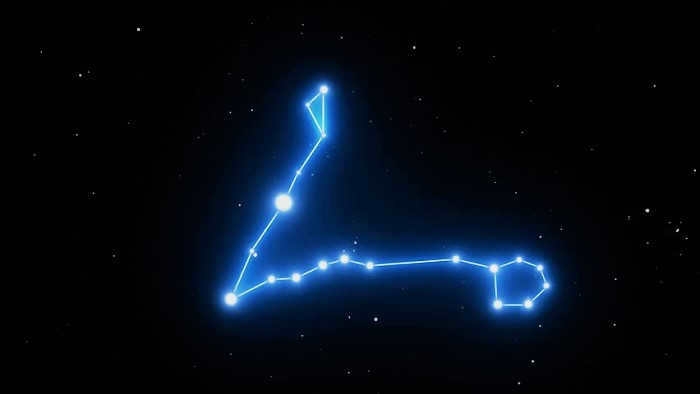
Legends and Folklore
According to ancient Greek mythology, the constellation of the fish was closely associated with Aphrodite, the goddess of love, and her son Cupid (also known as Erotus). As the story goes, when the Olympian gods were threatened by the fearsome giant Typhon, they sought refuge in Egypt. To disguise themselves, they transformed into various animals. Aphrodite and Eros chose to become fish. Some versions of the myth suggest that the fish aided the goddess and her son by providing shelter underwater, and as a token of gratitude, Aphrodite immortalized them in the night sky as a constellation.
There exists an alternate legend that recounts the tale of a peculiar pair: the exquisite Galatea and the Cyclops. As the legend goes, Galatea lost her affection for the Cyclops and was unfaithful to him with another suitor, causing the Cyclops to pursue the illicit lovers. In a desperate bid to evade capture, they plunged into the depths of the water and perished, only to be reunited in the heavens as a celestial constellation.

Love is a common theme in many stories, and Pisces represents this emotion in various ways.
The stars that form the Pisces constellation
There are over 160 different stars that make up the constellation, but most of them are not particularly notable in terms of brightness. As a result, the brightest star in Pisces is noticeably absent. However, there are three systems that stand out among the rest.
One of these systems is Alpha Pisces, which consists of the double star Alrisha. Alrisha translates to “rope” and serves as the main connection between the western and eastern parts of the constellation.
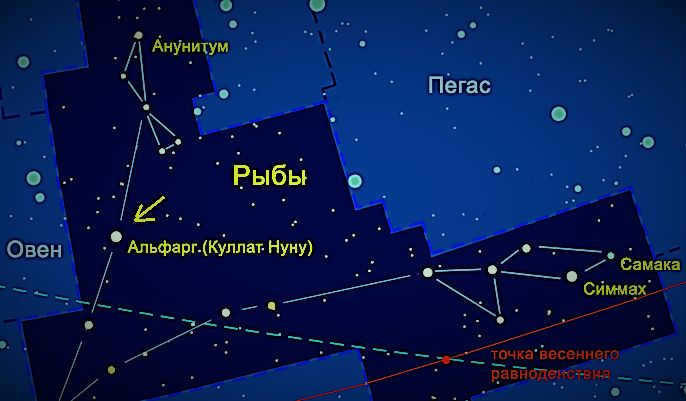
Iota, also known as 17 Pisces, is a star that is several times larger than our Sun. It does not have a traditional name, but it is a part of the Chinese asterism called the Roll of Thunder. In Chinese astronomy, it is referred to as the Fourth Thunderbolt Star.
Van Maanen’s Star, located in the constellation Pisces, is a white dwarf that is not very bright. It was named after the astronomer Adrian van Maanen, who discovered it. This star is the closest white dwarf to us within the constellation.

Additional entities
Pisces contains a number of fascinating celestial bodies. For instance, there is the M74 spiral galaxy, which is actively producing new stars. Over the past decade alone, two supernovae have occurred there and a black hole has been identified.
Another spiral galaxy, NGC 488, is known for its relatively dense core. When observed through a telescope, it appears as a small nebula.
